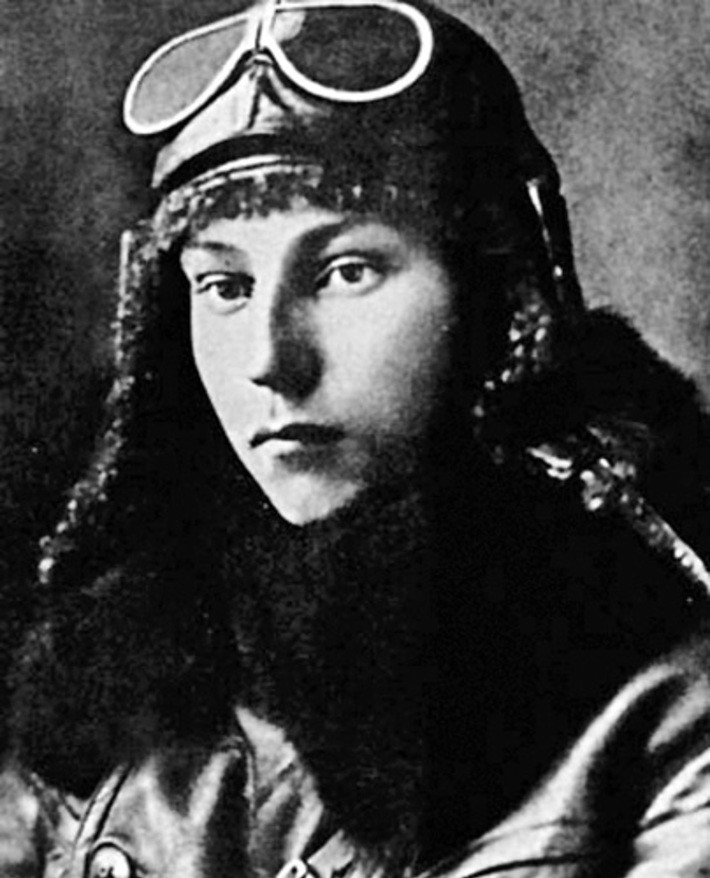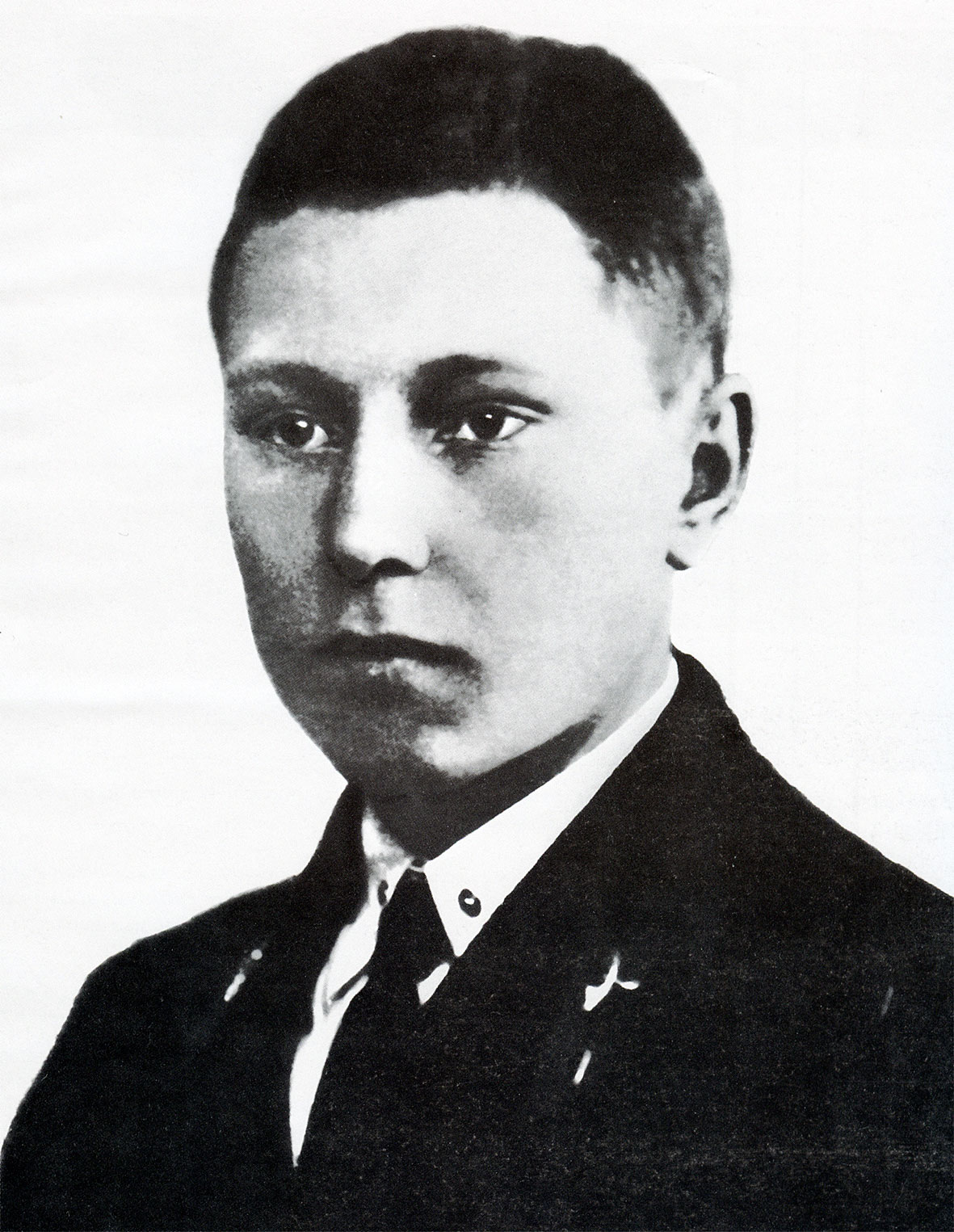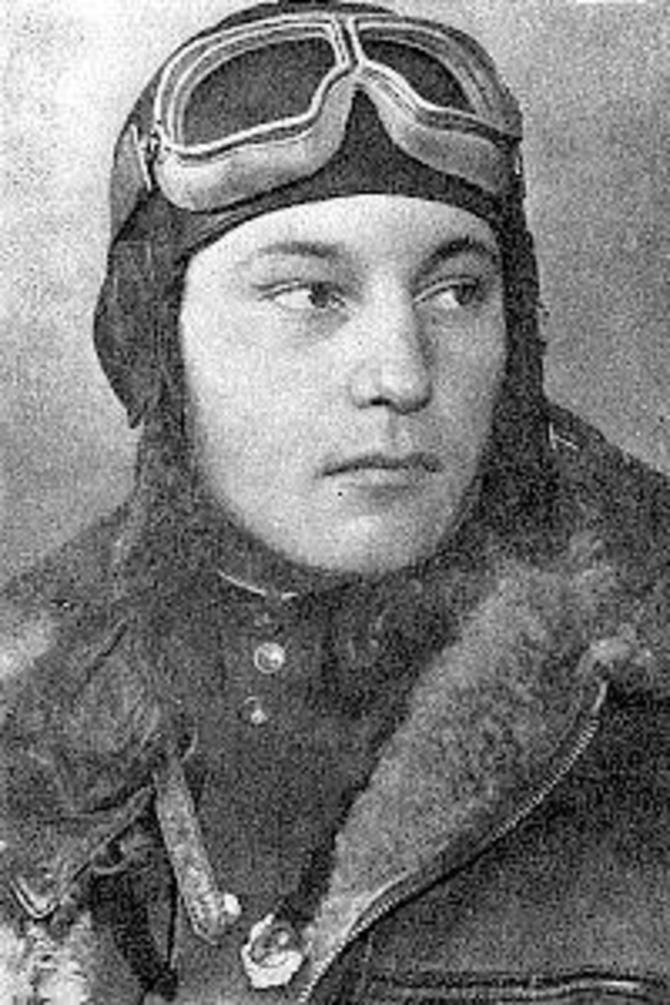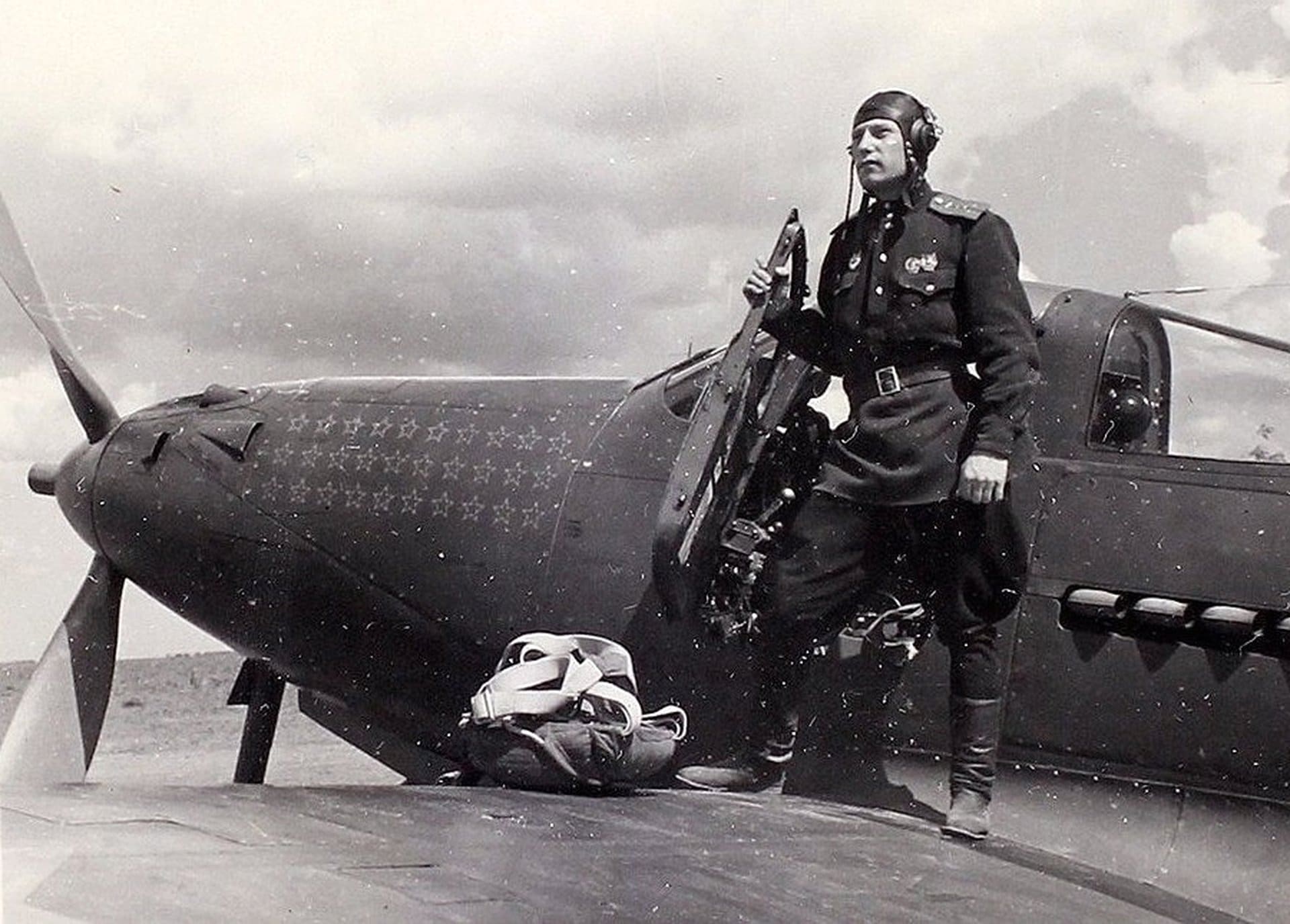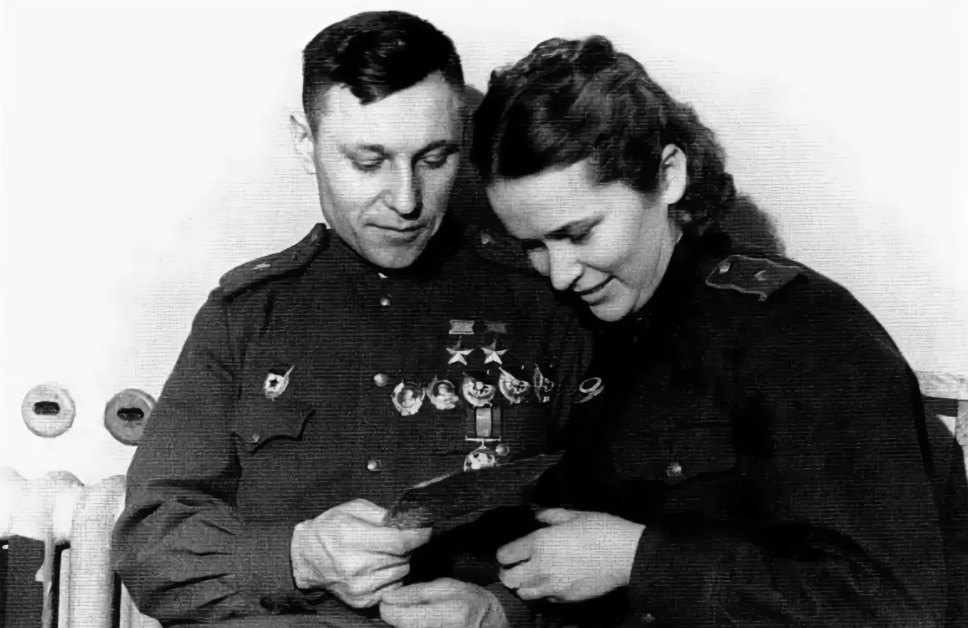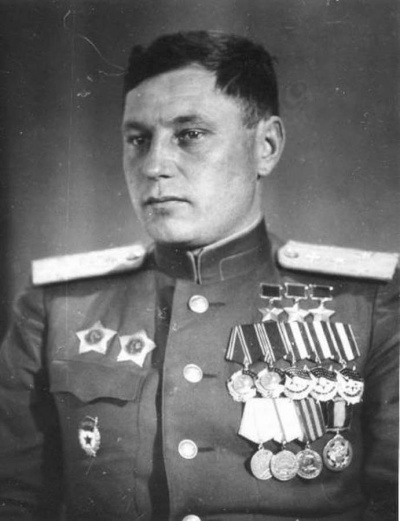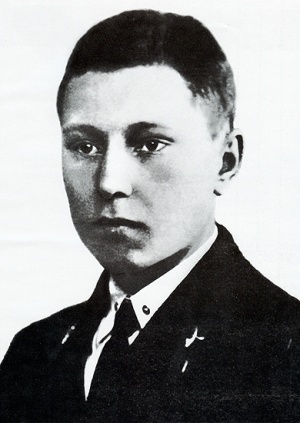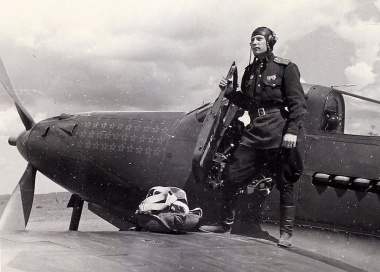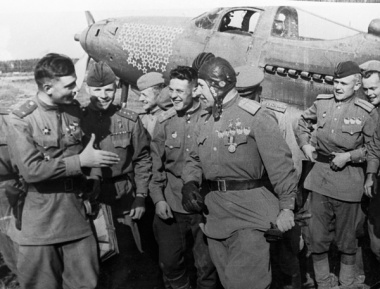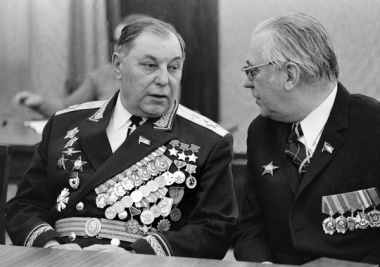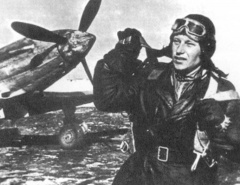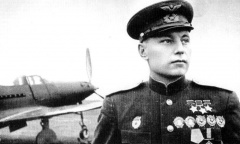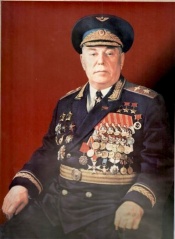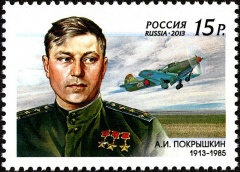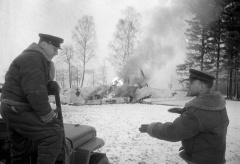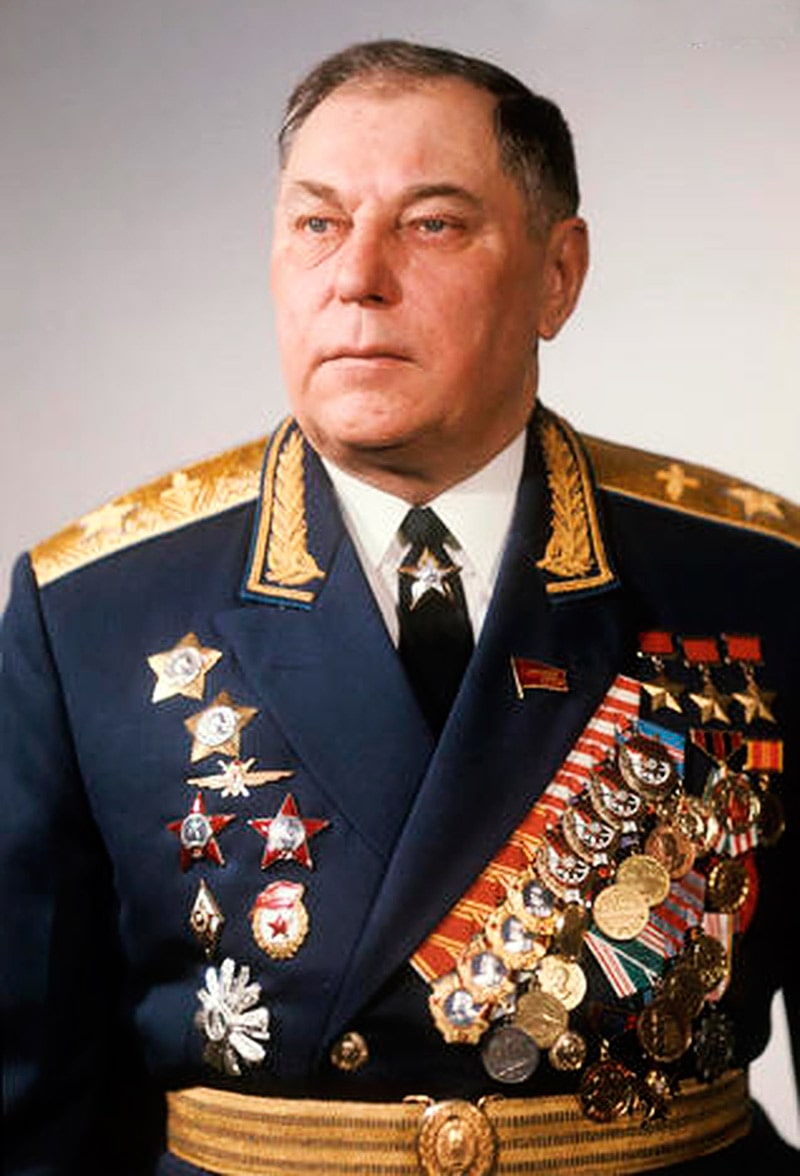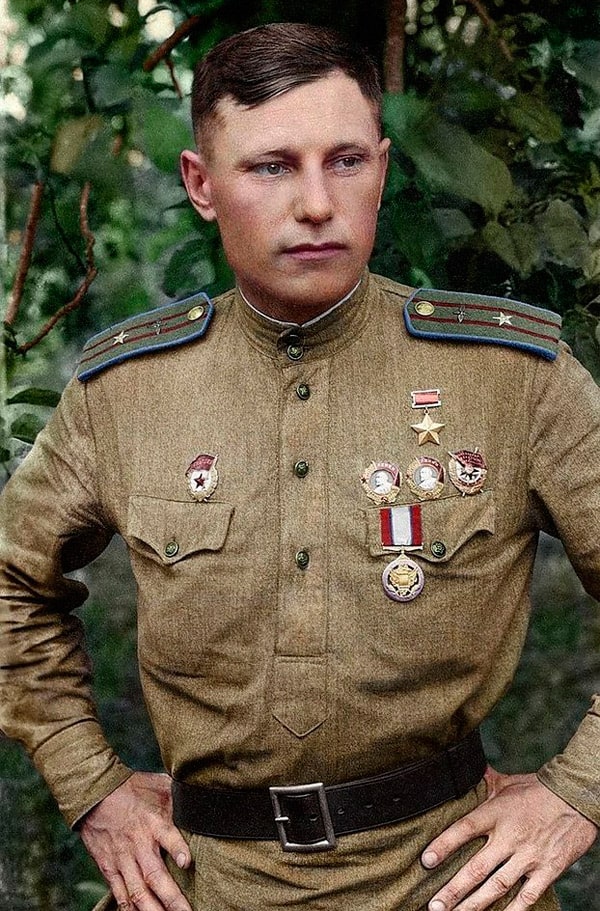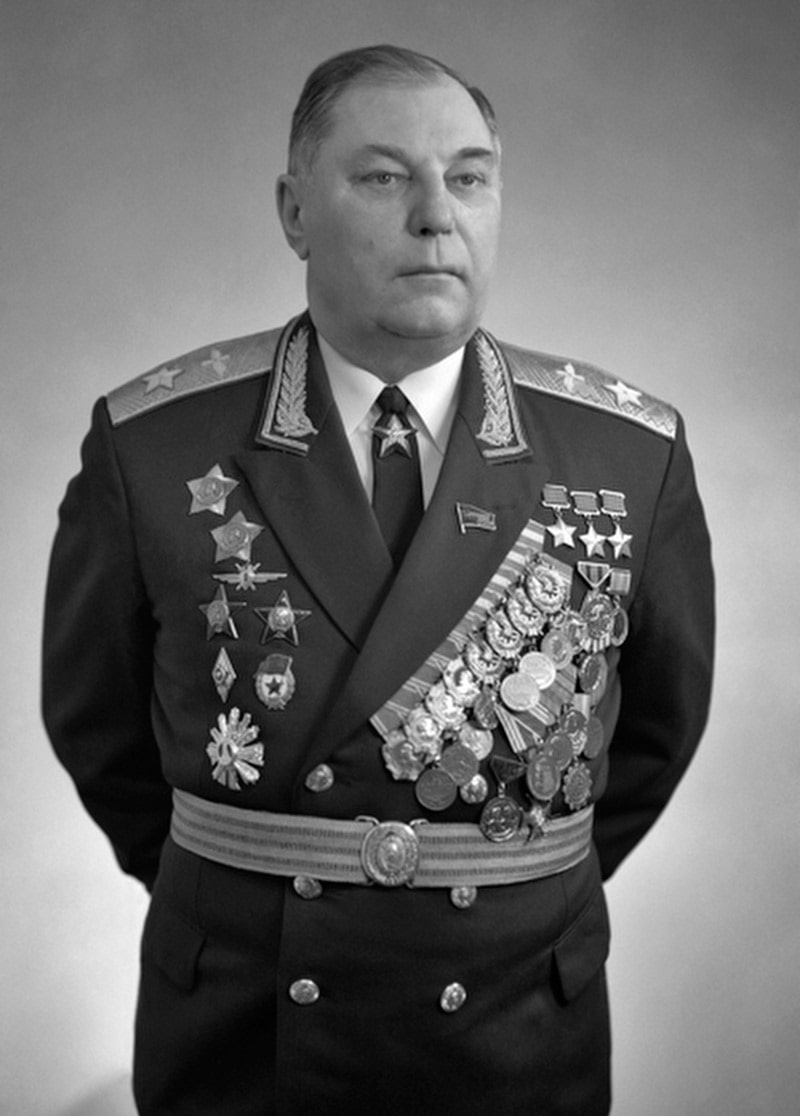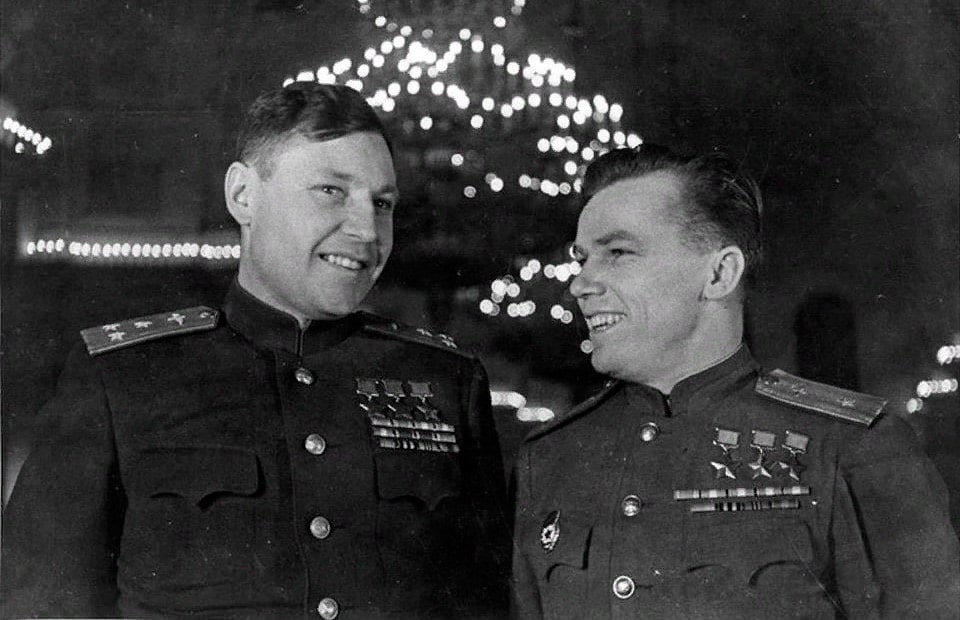Содержание
- 1 Краткая биография Александра Ивановича Покрышкина
- 1.1 Довоенные годы
- 1.2 Великая Отечественная война
- 1.3 Подвиги Покрышкина
- 1.4 Послевоенное время
- 2 Личная жизнь героя
- 3 Интересные факты из жизни Покрышкина
- 4 Фото Александра Покрышкина
- 5 Видео о летчике — асе
- 6 Книги Александра Ивановича Покрышкина
Имя Александра Ивановича Покрышкина наводило страх на немецких лётчиков. «Внимание, внимание! В небе Покрышкин!» — так предупреждали друг друга по радиостанции фашисткие лётчики. И боялись не зря — 59 вражеских самолётов лично сбил лётчик герой Покрышкин. Для советских людей он олицетворяет беззаветную любовь к Родине, мужество и бесстрашие. О его подвигах, о непростых взаимоотношениях с начальством и о личной жизни расскажем в данной статье.
Курсы по востребованным профессиям в прибыльных сферах
Освой современную и актуальную профессию. Прибыльные направления с большой зарплатой! Знакомство с курсом за 1 руб.
Выбрать
Краткая биография Александра Ивановича Покрышкина
Довоенные годы
Город Николаевск, ныне Новосибирск. 19 марта 1913 года в семье рабочих рождается второй мальчик — Саша. Всего в семье Покрышкиных было семь детей: шесть мальчиков и одна девочка. С детства Саша был смышлёным парнишкой. Мечту о небе у Саши Покрышкина породил агитсамолет Общества друзей воздушного флота. Это был купленный на пожертвования сибиряков «Юнкерс», который приземлялся на пустыре у военного городка. Десятилетним мальчиком будущий ас впервые увидел так близко самолет.
«Буду делать все, но стану только летчиком!»
Закончив семилетнюю школу, Александр начинает работать на стройке, а после поступает в ФЗУ. Родители его не поддержали, и мальчик покинул отчий кров навсегда. Через года заветная путевка в авиацию получена – он едет в Пермь. Но, приехав учиться, Покрышкин узнает, что зачислен на курс авиамехаников, так как авиашкола была перепрофилирована с летного учебного заведения в авиационно-техническое.
В 1932 году зачислен в Красную Армию добровольцем. И здесь начинается его путь как лётчика. Александр пишет начальству в общей сложности 44 рапорта о том, чтобы его направили на обучение летной профессии, но ответа так и не было. Тогда он просит разрешения быть лётчиком-наблюдателем в самолете Всеволода Севастьянова «Р-1» (разведчик-1) и ему разрешают. По сути Севастьянов становится учителем у Александра Покрышкина. Свой первый самостоятельный полет Покрышкин совершил в аэроклубе Краснодара во время своего отпуска. Там за 17 дней он осваивает двухгодичную программу аэроклуба и экстерном на «отлично» сдает экзамен. Начальник клуба сказал:
Покрышкин первый, кто смог получить летное удостоверение всего за три недели
Дальше он поступает в Качинскую военную авиационную школу летчиков. Менее, чем за один год оканчивает знаменитую Качу и получает назначение в 55-й истребительный авиаполк, располагавшийся на западной границе, под Бельцами (Молдавия). Там и застало А.И. Покрышкина начало Великой Отечественной войны.
Великая Отечественная война
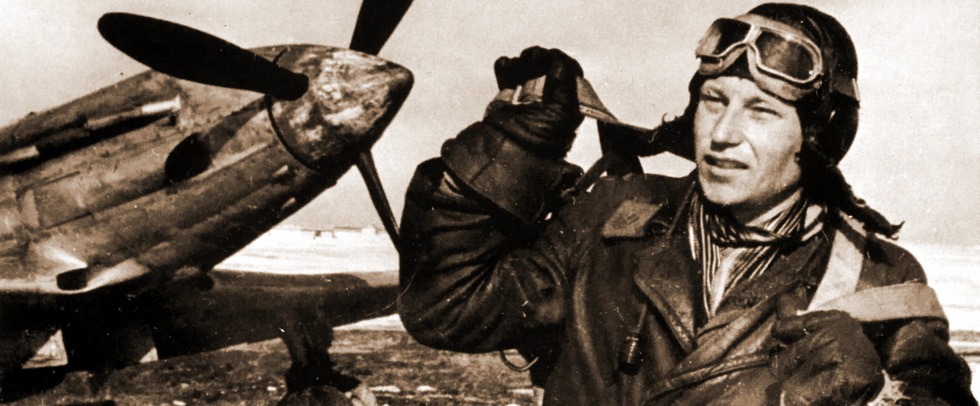
Через некоторое время наш герой понимает, что тактика боя очень устарела и начинает делать заметки на этот счёт. Он завел тетрадь, озаглавив ее «Тактика истребителей в бою». Эти заметки, вырезки, схемы стали началом его науки побеждать. (Тетрадь была сохранена будущей женой Покрышкина – Марией Кузьминичной и передана ею в Центральный музей Вооруженных Сил). В результате его кропотливой творческой работы постепенно вырабатывалась та основная формула воздушного боя, которая стала известна всей нашей истребительной авиации. Четыре элемента входили в эту формулу: ВЫСОТА – СКОРОСТЬ – МАНЕВР – ОГОНЬ. Заслугой выдающегося летчика является то, что он одним из первых сумел объединить все необходимые составные элементы наступательного воздушного боя в единое целое. Позже лётчик-ас Иван Кожедуб говорил, что внимательно изучая теорию Покрышкина применил её в жизнь и усовершенствовал.
«Чтобы соображать в воздухе, надо готовиться к этому на земле» — одно из правил А.И. Покрышкина
Покрышкин несколько раз был близок к гибели. Пулемётная пуля прошла через его сиденье с правой стороны, повредила плечевой ремень, отрикошетила от левой стороны и поцарапала подбородок, покрыв приборную доску кровью. Вспоминая войну, Александр Иванович говорил:
«Тот, кто не воевал в 1941—1942, не знает настоящей войны»
Подвиги Покрышкина
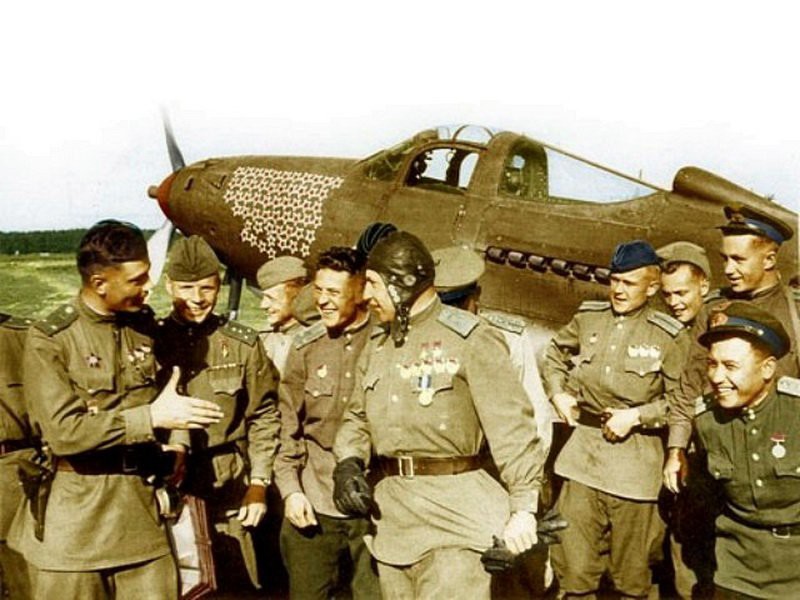
За апрель 1943 года А. И. Покрышкин сбил 10 немецких самолётов. Тогда же и получил своё первое звание Героя Советского Союза.
В большинстве вылетов Покрышкин брал на себя самую трудную задачу — сбить ведущего. Как он понял из опыта 1941—1942 годов, подбить ведущего значило деморализовать противника и часто этим заставить его вернуться на свой аэродром.
Немецкие летчики, теряя свои самолеты при встрече с нашим асом, вскоре стали предупреждать друг друга о его появлении: «Внимание! В воздухе Покрышкин!»
За май 1943 года он сбил 12 самолетов и 2 — в июне. Вторую звезду Героя Советского Союза Покрышкин получил 24 августа 1943. В воздушной битве на Кубани он сбил лично 22 самолёта врага, стали асами многие его ученики, а Покрышкин приобрёл всесоюзную славу. К концу 1943 года выполнил 550 боевых вылетов, провёл 137 воздушных боёв, сбил 53 самолёта противника.
19 августа 1944, после 550 боевых вылетов и 53 официальных побед, Покрышкин был награждён Золотой Звездой Героя Советского Союза в третий раз. Он стал первым трижды Героем Советского Союза в стране.
Покрышкин создал собственную систему подготовки асов. Особое значение придавал он боевой дружбе и слетанности в эскадрильях. Не раз оставлял уже пойманный в прицел немецкий самолет ради спасения, попавшего в опасность своего летчика. До конца своих дней больше всего гордился он тем, что по его вине не погиб ни один из тех, кого он водил в бой…
Послевоенное время
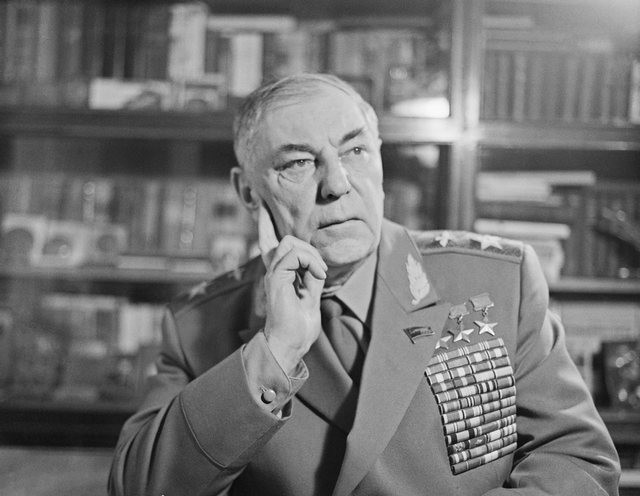
Личная жизнь героя
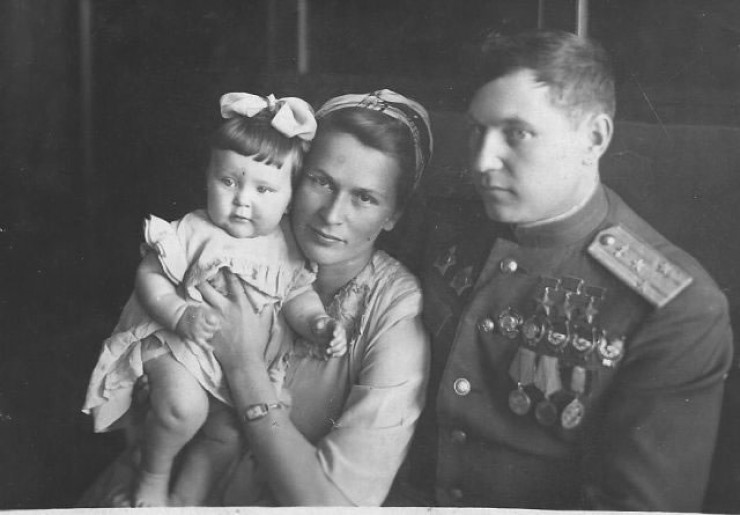
После войны Мария Кузьминична сильно заболела и по воспоминаниям сына Александра сказала: «Мужчине труднее быть одному, чем женщине. И мне на том свете покоя не будет, если ты будешь неухоженный. Только не женись на очень молодой. Ей нужен будешь не ты, а твое положение… » «Ну как же я смогу жить без тебя? — обнял отец маму. — А наши дети? Да мы сделаем все, что угодно, лишь бы ты выздоровела… Даже если бы какой-то волшебник вернул мне молодость и выстроил передо мной сотню самых распрекрасных красавиц, а в самом конце поставил тебя в гимнастерке и кирзовых сапогах, какой ты была, когда мы познакомились, я выбрал бы тебя… «. Мария Покрышкина до конца дней своих считала, что ее исцелила любовь.
В своей жизни Александр Иванович с честью выдержал испытание «медными трубами» и сполна хлебнул горечи их обратной стороны – зависти чиновников к славе народного Героя.
Интересные факты из жизни Покрышкина
- В тайне от начальства во время отпуска за 17 дней осваивает двухгодичную программу аэроклуба и экстерном на «отлично» сдает экзамен
- Первый воздушный бой Полкрышкина закончился бедой: по недоразумению он подбил советский самолёт 211-го бомбардировочного полка — лёгкий бомбардировщик Су-2, приняв его за вражеский. Хаос того первого дня во многом спас будущего аса, и он отделался лишь очень серьезным нагоняем от начальства.
- С 1942 года Покрышкин находился в очень сложных отношениях с новым командиром полка Исаевым, который не принимал критики Покрышкиным устаревшей тактики советской истребительной авиации. Серия их конфликтов привела к тому, что Покрышкин был снят с должности и исключён из партии, а из имевшей место стычки в лётной столовой с офицерами соседнего полка сфабриковали дело против Покрышкина, которое было направлено для рассмотрения в военный трибунал в Баку. Только заступничество комиссара полка и вышестоящих начальников спасли боевого лётчика. Дело было прекращено, а сам он восстановлен в партии и в должности.
- В феврале 1944 года получил повышение и предложение продолжить службу в Главном штабе ВВС РККА — управлять подготовкой новых пилотов. Но боевой лётчик отверг это предложение и остался в своём полку.
- Президент США Франклин Рузвельт восхищенно сказал о нем: «Покрышкин, несомненно, самый выдающийся летчик Второй мировой войны»
- Служивший когда-то с Покрышкиным известный летчик Константин Сухов рассказал однажды, как, будучи во время арабо-израильской войны советским военным советником по авиации в Сирии, он предлагал сирийским летчикам провести налет на позиции противника, используя определенную тактику, а они ему: нет, мы так делать не будем, Покрышкин пишет иначе! И показывали ему красиво оформленную книгу на арабском языке. Оказывается, главком сирийских ВВС на собственные деньги перевел и издал тиражом в пять тысяч экземпляров книгу Александра Ивановича «Небо войны»
Фото Александра Покрышкина
Видео о летчике — асе
Документальный фильм «Неизвестный Покрышкин. Уникальные хроники войны
Короткий видеоролик о летчике герое Александре Покрышкине
Книги Александра Ивановича Покрышкина
- «Познать Себя в бою». А. И. Покрышкин
В книге автор много места уделяет раздумьям о развитии бойцовских качеств у летчика-истребителя – смелости, решительности, мгновенной реакции, высокой боевой выучке, преданности Родине.
- «Небо войны» А. И. Покрышкин
За время Великой Отечественной войны А.И. Покрышкин провел 156 воздушных боев и сбил 59 самолетов противника. Рассказывая о себе, автор старается раскрыть источники героизма летчиков, прослеживает рост их мастерства.
Покрышкин Александр Иванович

Александр Покрышкин — краткая биография
Александр Иванович Покрышкин родился 19 марта 1913 года в Новосибирске (в то время – Новониколаевск) в семье рабочего. С самого детства юный Саша имел большую тягу к знаниям, особенно к авиации. Но после окончания школы в 1928 году, по желанию родителей, пошел работать на стройку
Два года спустя молодой Александр Покрышкин покинул родительский дом и поступил в техническое училище Новониколаевска, по окончании которого получил специальность слесаря – лекальщика. Далее в образовательной и трудовой биографии будущего летчика значились институт сельскохозяйственного машиностроения и работа слесарем-инструментальщиком на заводе «Сибкомбинатстрой».
В 1931 году Александр вступил в комсомол, а еще через год в Красную Армию, где наконец-то начал осуществлять свои мечты о небе. В качестве добровольца был направлен в авиационную школу в Перми, которую он окончил в 1933 году. Зимой 1934 г. Александр Покрышкин уже служил в 74-й стрелковой дивизии Северо-Кавказского округа в качестве старшего техника авиазвена. На этой должности им был предложен ряд улучшений для пулемета ШКАС, а также для других элементов вооружения.
В период обучения в Краснодарском аэроклубе (1936-38 гг), Покрышкин тайно от начальства прошел курс годовой программы гражданского пилотирования всего за 17 дней. Талантливого молодого человека заметили и допустили к поступлению в летную школу г. Качина, а затем в качинскую Краснознаменную авиационную школу имени Мясникова. После выхода из ее стен с отличными показателями по всем предметам, Покрышкин Александр Иванович был распределен на должность младшего летчика 55-го истребительного авиаполка.
Великую Отечественную войну он встретил будучи заместителем командира эскадрильи на Южном фронте. Аэродром Покрышкина подвергся воздушной атаке в самый первый день войны – 22 июня 1941 года. Через четыре дня после этой даты Александр Иванович пополнил свою боевую биографию первым подвигом – сбил немецкий истребитель Мессершмидт Bf 109. После второго удачного поражения противника 3 июля, Покрышкин был подбит фашистским зенитным орудием и отброшен за линию фронта. Четыре дня ему пришлось пробираться в свою часть.
А. Покрышкин в годы Великой Отечественной
Самые первые месяцы войны показали Покрышкину всю отсталость тактики советских ВВС, решив исправить это дело, Александр Иванович начал записывать идеи по ее улучшению в личную записную книжку. Смелый и выносливый летчик часто совершал вылеты в самых тяжелых обстоятельствах. В 1941 г. был награжден орденом Ленина, за бесстрашный полет на МиГ-з в плохие погодные условия, после того, как двое других летчиков разбились, пытаясь взлететь. Покрышкин не только взлетел, но и успешно определил местонахождение вражеских танков генерала фон Клейста. В дальнейшем он участвовал во многих оборонительных операциях: в Молдавии, Донбассе, Ростове и т.д. В августе 1942 г. был назначен командиром эскадрильи Северо-Кавказского фронта. В биографии героя есть и темная жизненная полоса. За критику устаревшей тактики воздушного боя Покрышкина лишили звания коммуниста и всех должностей и отдали под трибунал. Спасли героя заступничество полка и вышестоящих начальников.
В 1943 г. А.И.Покрышкин наконец-то реализовал себя как новатор воздушного боя. В боях на Кубани, выступая против самых сильных и прославленных вражеских авиасоединений, талантливый летчик применил собственные тактические приемы, известные сегодня как «кубанская этажерка» и «скоростные качели». Благодаря ему, советские ВВС стали использовать наземные радары и продвинутую систему контроля. В любых вылетах Покрышкин отводил себе самую трудную задачу – уничтожение ведущего вражеской колонны, так как, по его наблюдениям, это способствовало деморализации немецких летчиков.
А.И. Покрышкин был первым трижды Героем Советского Союза (24 апреля 1943 г; 24 августа 1943 г. и 19 августа 1944 г.)
С 1944 г. был переведен на небоевую работу в Главный штаб РККА для управления подготовкой новых пилотов. С того же года стал живым символом советской героической пропаганды. Его берегли и редко отпускали на вылеты.
Летом того же года Покрышкин Александр Иванович был удостоен звания полковника и принял командованием 9-й гвардейской авиадивизией. Свой последний фронтовой вылет совершил 30 апреля 1945 г. Принимал участие в параде Победы. Согласно официальной биографии, за годы войны он совершил 650 вылетов, участвовал в 156 воздушных боях, уничтожил 59 гитлеровских самолетов.
После окончания ВОВ военная биография героя СССР не закончилась. В 1957 г. Покрышкин закончил Высшую военную академию им. Ворошилова. В 1972 г. стал председателем Центрального комитета ДОСААФ, в 1981 г. — военным инспектором-советником Группы гениспекторов Минобороны СССР.
Умер Покрышкин Александр Иванович 13 ноября 1985 г. в Москве.
Биографии и подвиги Героев Советского Союза и кавалеров Советских орденов:
|
|
Александр Покрышкин — биография
Александр Покрышкин – летчик-ас, военачальник, маршал авиации. Первый человек, трижды удостоенный звания Героя Советского Союза. Провел почти 160 воздушных боев с фашистами, самостоятельно сбил 59 самолетов противника и еще 6 в групповом бою. По результативности его опередил только один пилот-истребитель – Иван Кожедуб.
Природа скупа. Она редко рождает одаренных людей, а настоящую гениальность дает и того реже. Неординарным людям всегда нелегко, судьба их складывается труднее, они умеют доставлять неудобства окружающим. Причина, скорее всего, кроется в характере. У выдающихся людей и характер будь здоров, не сахар. Однако на самом характере далеко не уедешь, его еще надо проявить, а на это нужна воля. Если в человеке сочетаются эти два качества, он неизбежно станет выдающейся личностью, такой, как Александр Покрышкин. Его судьба во многом сложилась благодаря времени, в котором он жил – патриотическом, романтическом и одновременно тяжелом. Говорили, что ему везло, но только он сам знал, чего стоит это везение.
Детство
Родился Александр Покрышкин 6 марта 1913 года в городе Новониколаевск (сейчас это Новосибирск) Томской губернии. Отец – Иван Покрышкин был простым рабочим, мама занималась домом и детьми, которых в семье родилось семеро – шесть сыновей и одна дочка. Доходы семьи были более, чем скромными. Так же жили и другие семьи по соседству. Дети были предоставлены сами себе, поэтому иногда воровали, дрались, били стекла в окнах. Совсем недавно отшумела Первая мировая война, нужно было восстанавливать страну, и подрастающим поколением почти никто не занимался.
Саша отличался от других детей. Можно сказать, что он сам занимался своим воспитанием и всесторонним развитием. В школе получал хорошие отметки, любил читать. С двенадцатилетнего возраста его заинтересовала авиация. После окончания семилетки парень начал трудовую биографию на стройке. Примерно в те годы пришла настоящая слава к летчику-испытателю Валерию Чкалову. Вдохновленный его примером Покрышкин тоже начал мечтать о небе.
Но пока оно оставалось только в мечтах, а повседневная жизнь протекала достаточно прозаично. В 1930-м Александр поссорился с отцом, ушел из дома, стал студентом местного технического училища, и за полтора года выучился на слесаря-лекальщика. Потом был вечерний институт сельскохозяйственного машиностроения. Парень днем работал в качестве слесаря-инструментальщика завода «Сибкомбинатстрой», а вечерами ходил на занятия. В 1931-м стал членом ВЛКСМ. В июне 1932 года ушел добровольцем в Красную Армию. И все это время молодой человек не переставал думать о полетах.
Авиация
В том же, 1932-м Покрышкин получил направление, и стал курсантом 3-й Пермской авиационной школы. Он очень радовался такому повороту в биографии, и пока еще не знал, что из этой школы выходят не летчиками, а техниками. Спустя годы Александр вспоминал, как говорил начальник школы, о том, что все хотят повторить судьбу Чкалова и летать, но кому то же надо заниматься и моторами.
Покрышкин с головой ушел в учебу. Гораздо позже он поймет, что именно благодаря этой школе он начал хорошо разбираться в устройстве самолетов, обзавелся техническими навыками, впоследствии не раз спасшими ему жизнь в годы войны.
Покрышкина по-прежнему не принимали в летную школу, но он упорно готовился к тому, что однажды все-таки его мечта осуществится. Александр прыгал с парашютом, водил планеры, и только осенью 1938-го ему повезло оказаться за штурвалом У-2. Возможность побывать в небе выпадала очень редко, поэтому вместо практики будущий ас «штурмовал» теорию.
Его старания вскоре оценили. В ноябре 1938-го Покрышкин стал курсантом Качинской летной школы, из стен которой вышел спустя год, имея красный диплом и специальность «летчик-истребитель». Александру предлагали остаться в этой же школе в качестве инструктора, но он категорически отказался. Он не мог отказаться от своей мечты летать, а не учить других.
Война
Александр Покрышкин прошел всю войну, от первого ее дня до победы 9 мая 1945-го. Первый вражеский самолет отважный летчик сбил уже на второй день войны.
Участвуя в воздушных боях, Александр с горечью отмечал, что небо над его родиной очень слабо защищено от врага. Тактика нападения не вырабатывалась, пилоты дрались вслепую, техническое оснащение хромало. Да и что можно было ожидать, если в авиационных мастерских занимались выпуском танков. Защита воздушного пространства СССР держалась только на патриотизме и героизме летчиков-истребителей. Спустя много лет Александр скажет, что тот, кто не был на фронте в 1941-1942-м годах, не знает, что такое настоящая война.
Первую награду – орден Ленина, Покрышкин получил за то, что добыл ценные данные о противнике. Шел декабрь 1941-го, снег шел постоянно, мешая наземной разведке выполнять поставленную задачу. В итоге они не смогли точно определить, где дислоцируется танковая часть Пауля фон Клейста. Тогда в разведку отправился Покрышкин, несмотря на то, что вьюга мешала рассмотреть хоть что-нибудь на земле, и топливо в баке его самолета уже было почти на нуле. Ему удалось выполнить задачу, и благодаря добытым летчиком сведениям, Красная Армия отвоевала город Ростов.
1943-й год стал переломным не только в судьбе Покрышкина, но и всей авиации. Тщательно проанализировав предыдущие бои, летчик-истребитель разработал уникальные приемы ведения боя и патрулирования воздушного пространства. Его главной целью теперь стал ведущий, именно после выхода из строя главного самолета, вражеская эскадрилья теряла боеспособность.
Покрышкин продолжал нещадно крушить вражескую авиацию. В апреле 1943-го он сбил десять фашистских самолетов, за что ему первый раз присвоили звание Герой Советского Союза. Буквально за месяц он пополнил счет сбитых машин еще на 12 штук.
Август 1943-го, битва за Кубань. Покрышкин сбивает еще 22 немецких самолета. Вместе с ним сражались в воздухе и его ученики. Смелость и героизм Покрышкина отмечена очередной наградой – это вторая Звезда героя. Теперь его имя знал каждый советский человек.
19 августа 1944 года Александра снова награждают золотой Звездой, и он становится первым из всех советских военных, трижды удостоенных звания Герой Советского Союза. В журнале «Смена» появилась статья о прославленном летчике, там же разместили и его фотографию. Александра еще называли Ястребом небес. Такое точное имя дало ему американское издание True Comics, и оно вполне соответствовало действительности.
Великая Отечественная война для Покрышкина окончилась 24 июня 1945 года, когда он возглавил колонну 1-го Украинского фронта и прошел вместе с ней во время парада Победы на Красной площади.
Официальная статистика гласит, что Покрышкин за годы войны совершил 650 вылетов, провел 156 боев с врагом, уничтожил 59 боевых машин врага. Сам летчик-ас говорил, что на его счету 90 уничтоженных самолетов, но, по мнению историков, это слишком преувеличенные данные. Они считают, что Александр сбил чуть более сорока самолетов врага.
Мирное время
После победы Покрышкин продолжил службу. Энтузиазм прославленного летчика разбивался о сопротивление Василия Сталина, который на тот момент занимал должность командующего ВВС в Московском военном округе. Конфликт с сыном Вождя народов привел к тому, что звание генерал-майора авиации Покрышкину присвоили только после того, как умер Иосиф Сталин.
В 50-е годы Покрышкин перешел на службу в ПВО, продолжал подниматься по карьерной лестнице и ушел в отставку, будучи заместителем главнокомандующего войск ПВО СССР.
Личная жизнь
Александр Покрышкин страстно любил не только авиацию. К ней добавилась еще одна большая любовь – медсестра Мария Кузьминична, с которой он познакомился в 1942-м на Каспийском море. Любовь их была настолько сильной, что они писали письма друг другу ежедневно. Некоторые из них так и не дошли, по причине того, что адресат уже выбыл из места дислокации.
Официально свои отношения Александр и Мария оформили 1 апреля 1944-го, в Черниговке, деревне в Приморском крае. На тот момент новоиспеченная супруга летчика уже была беременна дочерью Светланой. К сожалению, она умерла в возрасте 52-х лет, у нее диагностировали рак. В 1947 году у супругов родился сын, которого назвали в честь отца Александром. Личная жизнь летчика-аса сложилась хорошо, дети радовали, вскоре появились внуки – Александр, Павел и Екатерина.
Смерть
Покрышкин никогда не жаловался на здоровье, он чувствовал себя отменно. Трудился почти до самой смерти, был сотрудником Министерства обороны СССР.
Умер один из самых прославленных летчиков Советского Союза 13 ноября 1985 года от сердечной недостаточности. Ему шел 73-й год.
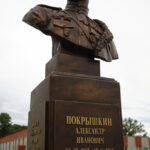
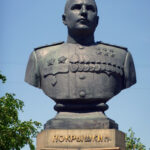
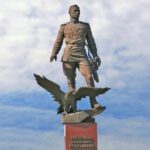
Местом упокоения Александра Покрышкина стало Новодевичье кладбище столицы. На могиле летчика установлен бюст с тремя Звездами Героя.
Интересные факты
- О таланте Покрышкина, как летчика, можно судить по тому, что он сумел научиться пилотировать самолет за 17 дней, а не за год, как было положено по программе летного училища.
- В одном их первых боев в воздухе Покрышкин спутал новый советский бомбардировщик СУ-2 с немецким, и сбил его. В результате погиб штурман, а пилоту удалось выжить.
- В 1985 году творческое объединение «Экран» выпустило биографическую картину о Покрышкине, в котором есть интервью с прославленным летчиком.
- Память о летчике- истребителе живет в книгах, памятниках. Его имя носят улицы и летные училища.
- Покрышкин очень любил и дорожил своей женой. Его книга под названием «Небо войны» посвящена именно Марии.
Ссылки
- Страница в Википедии
Для нас важна актуальность и достоверность информации. Если вы обнаружили ошибку или неточность, пожалуйста, сообщите нам. Выделите ошибку и нажмите сочетание клавиш Ctrl+Enter.
Главное
Александр Иванович Покрышкин – легендарный советский военачальник, выдающийся летчик-ас, первый трижды Герой Советского Союза, он был вторым по результативности пилотом-истребителем среди лётчиков стран антигитлеровской коалиции во Второй мировой войне. С 1972 года А.И. Покрышкин занимал пост председателя Центрального комитета ДОСААФ СССР. Возглавив общество, почти десять лет находился на этом посту и сыграл особую роль в истории ДОСААФ.
История
Саша Покрышкин родился в рабочей семье в городе Николаевске (сейчас Новосибирск). Смышленый парнишка в 10-летнем возрасте увидел агитсамолет Общества друзей воздушного флота и с этого момента стал мечтать о небе. После окончания школы-семилетки Саша идет работать на завод, а позже, в 1923 году становится курсантом 3‑й Военной школы авиатехников. В 1932 году Александр Покрышкин зачисляется добровольцем в Красную Армию и пишет множество рапортов с просьбой отпустить его в летное училище, но постоянно получает отказы. Несмотря на это в 1938 году, во время отпуска, за 17 дней он осваивает двухлетнюю программу Краснодарского аэроклуба и сдал экзамен на «отлично». Благодаря этому он становится слушателем Качинской военной авиационной школы, а через год получает должность младшего летчика и назначение в 55-й истребительный авиаполк Одесского военного округа.
Первый вылет Покрышкина произошел 22 июня 1941 года, а уже 26 июня 1941 года он одержал свою первую боевую победу, сбив во время разведки истребитель Мессершмитт . Через какое-то время Покрышкин понял, что та тактика боя, которой его обучали, устарела и начал писать свои заметки на этот счет. В результате он выработал ту основную формула воздушного боя, которая стала известна всей нашей истребительной авиации : высота-скорость- маневр-огонь. Всего за время Великой Отечественной войны Александр Иванович Покрышкин сделал 650 боевых вылетов, провел 156 боев в которых сбил 65 немецких самолетов. Он стал единственным человеком, удостоенным звания трижды Героя Советского Союза во время войны и первым, кто получил все три высокие награды.
После окончания войны Александр Иванович поступил в Военную Академии им. М.В. Фрунзе и окончил ее с золотой медалью. Дальнейшее обучение он продолжил в Военной Академии Генерального штаба Вооруженных Сил. Почти 25 лет Покрышкин прослужил в войсках ПВО, занимая ответственные должности и дойдя до заместителя главнокомандующего Войск ПВО СССР. В 1953 году Александр Покрышкин получил звание генерала, а через девятнадцать лет стал маршалом авиации.
Состояние
Известный факт, что работая главою ЦЛ ДОСААФ, Покрышкин помог Леониду Быкову в организации съемок любимого многими кинофильма “В бой идут одни старики”. Кстати, фрагмент из фильма, в котором герой Быкова был подбит и пешком добирался до своего расположения, тоже взят из жизни маршала, как и угона вражеского Мессершмитта.
Александр Иванович Покрышкин — автор книг «Крылья истребителя», «Твоя почетная обязанность», «Небо войны», «Познать себя в бою».
Впечатления
Покрышкин является Почётным гражданином городов: Мариуполь, Новосибирск, Бельцы, Ржев, Владикавказ. Его именем названы улицы в Москве, Новосибирске, Краснодаре, Новокузнецке, Севастополе, Алма-Ате В 1993 году малая планета номер 3348 получила имя «Покрышкин». В 1995 году в Новосибирске был открыт музей Александра Ивановича Покрышкина.
Медаль Покрышкина — региональная награда, учреждённая в 2013 году постановлением Губернатора Новосибирской области Медалью награждаются граждане за активное участие в военно-патриотическом воспитании, личный вклад в поддержание боевой готовности, за вклад в увековечивание памяти воинов-сибиряков, развитие авиации и космонавтики.
31 мая 2019 года, его именем назван международный аэропорт «Толмачево».
|
{{objectCandidate.short_description}} |
|
|
Адрес: Автор описания: {{objectCandidate.author}} Сайт: {{objectCandidate.site}} Координаты: {{(objectCandidate.coords || []).lat}} |
|
Объекты
|
Alexander Pokryshkin |
|
|---|---|

Pokryshkin in 1943 |
|
| Native name |
Алекса́ндр Ива́нович Покры́шкин |
| Born | 6 March [O.S. 21 February] 1913 Novosibirsk, Russian Empire |
| Died | 13 November 1985 (aged 72) Moscow, Russian SFSR, Soviet Union |
| Buried |
Novodevichy Cemetery |
| Allegiance | |
| Service/branch | |
| Years of service | 1932–1972 |
| Rank | Marshal of Aviation |
| Unit | 16th Guards Fighter Aviation Regiment |
| Battles/wars | World War II |
| Awards | Hero of the Soviet Union (thrice) US Army Distinguished Service Medal |
| Spouse(s) | Mariya Kuzmichna |
Alexander Ivanovich Pokryshkin (Russian: Алекса́ндр Ива́нович Покры́шкин; 6 March [O.S. 21 February] 1913 – 13 November 1985) was a Soviet fighter pilot in World War II, and later a Marshal of Aviation. He was one of the highest-scoring Soviet aces, and the highest-scoring pilot ever to fly an American aircraft, having achieved the great majority of his kills in the Lend-Lease Bell P-39 Airacobra.[1] During the war Pokryshkin earned the title Hero of the Soviet Union three times: 24 May 1943,[2] 24 August 1943, and 19 August 1944. After the war, he served in the Soviet Air Defense Forces, reaching the rank of Marshal of Aviation; he retired in 1981.
During the war, he strongly promoted training in and use of improved aerial combat techniques, such as vertical maneuvers that newer fighter aircraft were capable of carrying out, and he spent much of his time studying aerobatics for combat situations.
Early years[edit]
Vocational school student Pokryshkin c. 1930.
Pokryshkin was born in Novonikolayevsk (now Novosibirsk) in Tomsk Governorate, son of a Russian peasant-turned-factory worker.[3] He grew up in a poor, crime-ridden part of town, but unlike most of his peers he was more interested in learning than in fighting and petty crime. His nickname in his early teens was Engineer. He caught the «aviation bug» when he was 12 years old at a local air show, and the dream never left him. In 1928, after seven years of school, he found work as a construction worker. In 1930, despite his father’s protests, he left home and entered a local technical college, where he received a degree in 18 months and worked for six more as a steel worker at a local munitions factory. Subsequently, he volunteered for the army and was sent to an aviation school. His dream finally seemed to be coming true. Unfortunately the flight school was suddenly closed, and all students were instead transferred to be trained as aircraft mechanics. Dozens of official requests were denied with a simple explanation: «Soviet aviation needs mechanics just as badly».
Pokryshkin still strived to excel as a mechanic. Graduating in 1933, he quickly rose through the ranks. By December 1934, he became the Senior Aviation Mechanic of the 74th Rifle Division. He stayed in that capacity until November 1938. During that time his creative nature became clearly visible: he invented improvements to the ShKAS machine gun and the R-5 reconnaissance aircraft among other things.
Finally, during his vacation in the winter of 1938, Pokryshkin was able to circumvent the authorities by passing a yearly civilian pilot program in only 17 days. This automatically made him eligible for flight school. Without even packing a suitcase, he boarded a train to flight school. He graduated with top honors in 1939, and with the rank of senior lieutenant he was assigned to the 55th Fighter Regiment.
World War II[edit]
Early experiences[edit]
He was stationed in the Moldavian Soviet Socialist Republic in June 1941, close to the border, and his airfield was bombed on 22 June, the first day of the war.
His first involvement in air combat was a disaster. Seeing an aircraft in the air of a type he had never seen before, he attacked and shot it down, only to notice as it was going down that it had Soviet red stars on the wings. It was a Soviet Su-2 light bomber of the 211th Bomber Aviation Regiment, piloted by squadron commander Mikhail Gudzenko. This was a new bomber type that was kept secret even from other Soviet pilots. He then frantically flew in front of all the other MiG-3 pilots who were lining up on the other Sukhoi bombers, thwarting any other Soviet losses by other pilots of his unit.[4] Luckily, Gudzenko survived, although the navigator was killed.[5]
He claimed his first shootdown of an enemy aircraft when he shot down a Bf 109 the next day, while he and his wingman were on a reconnaissance mission, and were jumped by five enemy fighters. On 3 July, having claimed several more victories, he was shot down by German flak behind enemy lines and spent four days getting back to his unit. During the first weeks of the war, Pokryshkin began to see very clearly how outdated the Soviet combat doctrine was, and started slowly drafting his own ideas in his meticulous notebooks. He carefully recorded all details of all air engagements in which he and all his friends were involved, and came up with detailed analysis of each. He fought in very complicated conditions: constant retreat, poor- to no-controlling and communication from HQ, and overwhelming odds versus a superior opponent. He later said «one who hasn’t fought in 1941–1942 has not truly tasted war».[6]
Pokryshkin survived several close calls during this time. A machine gun round drove through the right side of the cockpit, cut his shoulder straps, ricocheted off the left side and scratched his chin, covering the entire windscreen in blood. Twice, unexploded bombs landed between his feet, one time during a dramatic low-level raid on his airfield by a pair of Ju 88s. Pokryshkin tried to defend his fighter, one of the very few remaining serviceable aircraft, by removing a flexible machine gun from the nearby bomber and placing it on top of his fighter’s fuselage. One of the German bombers saw Pokryshkin firing the only machine gun in the area and flew straight at him, dropping small bombs in a shallow dive. Pokryshkin watched a string of explosions running up to him, but the bomb that landed immediately next to him did not explode. The Ju 88 had dropped it too low; the bomb had insufficient time to arm itself before hitting the ground.
In the autumn of 1941 Pokryshkin, flying a MiG-3 (possibly winter-camouflaged), took off in sleet and rain conditions after two other pilots had crashed on takeoff. His mission was to locate von Kleist’s 1st Panzer Group, which had been stopped in front of Shakhty, and then their position lost by the Soviet forces. After some time flying at low altitude, low on gasoline, in bad weather, he finally found them, and was able to return safely to base with this critical information. For the successful completion of this mission, he was awarded the Order of Lenin.[7]
When the German summer offensive of 1942 began, part of 16th Guards Fighter Aviation Regiment had been re-equipped with the Yakovlev Yak-1 fighter, including Pokryshkin’s squadron. In that period Pokryshkin flew missions escorting Su-2 and Il-2 Shturmovik aircraft, and frequently was engaged by German fighters. On 17 July 1942, during a dogfight with Bf 109s, he became separated from his wingman Konstantin Figichov, and was jumped by a Rotte of Bf 109G-2 «Gustavs» flown by the experte Feldwebel Hans Dammers and his wingman Unteroffizier Kurt Keiser (7./JG 52). Initially Pokryshkin dived to escape, but realizing that the heavier and faster Gustavs would catch him, he performed a chandelle and then a barrel roll. This caused the Germans to overshoot, and then Pokryshkin shot down (and killed) Keiser at short range. Dammers attacked Pokryshkin shortly afterwards, damaging his Yak-1. But once more Pokryshkin performed a barrel roll, forced Dammers to slide forward, and then shot down the German ace.[8][9]
In the late summer of 1942, his regiment was recalled from the front lines to convert to a new fighter type, the Bell P-39 Airacobra. While training in the rear, Pokryshkin frequently clashed with the regiment’s new commander, Isayev (the former regimental navigator), who could not stand his criticism of Soviet air combat doctrine. Isayev fabricated a court-martial case, accusing Pokryshkin of cowardice, insubordination, and disobeying orders. Pokryshkin was grounded, removed from the regiment’s headquarters, and had his Party membership cancelled. However, he was helped by his squadron mates, the regimental political commissar, and the divisional commanders, and he was soon vindicated. The 216 Fighter Aviation Division’s leadership dismissed the case against him, and had him reinstated.
Kuban[edit]
Pokryshkin’s most significant contribution to the war effort and the most impressive kill record came during the battle for the Kuban region in 1943. The area east of the Crimean peninsula had seen vicious air combat in the months that led to the Soviet assault on Crimea itself, where the Kuban-based Soviet air regiments flew against Crimea-based Luftwaffe Geschwader. Pokryshkin’s regiment fought against such renowned German fighter units as JG 52 and JG 3 ‘Udet’. The area saw some of the most fierce fighting on the Eastern Front, with daily engagements of up to 200 aircraft in the air. Pokryshkin’s innovative tactics of using different fighter types stacked in altitude, the so-called ‘pendulum’ flight pattern for patrolling the airspace, and the use of ground-based radar, forward based controllers, and an advanced central ground control system, contributed to the first great Soviet Air Force victory over the Luftwaffe.
In the summer of 1942, the 4th Air Army in which Pokryshkin served received their first mobile radar stations. They were tested in directing interceptions of German and Romanian aircraft over water, and they proved highly successful.[citation needed]
In early January 1943, 16th Guards Fighter Aviation Regiment was sent to 25th Depot Fighter Aviation Regiment, a unit tasked with checking that Soviet-made and Lend-Lease aircraft were ready for combat service near the Iranian border, to re-equip with new aircraft, and also to receive new pilots. Many of these planes had to be ferried in from Iran. Whilst there were delays in assembly by the Americans in Iran, the Soviet pilots involved felt that the Americans were willfully impeding the war effort[citation needed] It was at this time that the unit converted to the P-39 Airacobra which, when all had arrived, transformed the unit into a 3-squadron regiment. 16th Guards Fighter Aviation Regiment received 14 P-39L-1s, seven P-39Ks (the very last of which was assigned to Pokryshkin) and 11 P-39D-2s. The unit returned to action on 8 April 1943. During the remainder of the month, Pokryshkin was credited with 11 Bf 109s and one Ju 88 destroyed.
He was credited with a Bf 109 destroyed on his very first Airacobra mission, on 9 April 1943, and scored four Bf 109 kills on 12 April 1943, one of his more successful days. He scored again on 15, 16, 20, 21, and 24 April – one Bf 109 on each day, adding a Ju 88 (probably in fact an He 111) on 29 April, plus one more Bf 109 on 30 April.[10]
On 4 May 1943 Pokryshkin gained three confirmed kills – two Ju 87 and a Bf 109.[11][12]
In most subsequent fights, Pokryshkin would usually take the most difficult role, attacking the German flight leader, who was often an aggressive experte. He had learned in 1941–42 that shooting down the flight leader would demoralise the enemy and often cause them to scramble home. Taking that into account, several such experten were almost certainly among his kills during the month of May that year. On 6 May 1943 Pokryshkin shot down a Bf 109, probably the plane of 9-kills ace Unteroffizier Heinz Scholze (4./JG 52), who crashed while trying to land at Kuteinikovo. Two days later, his victim may have been the Bf 109G-4 of Leutnant Helmut Haberda (an experte of 5./JG 52 with 58 victories to his credit), though the Luftwaffe credited the loss to Soviet flak.
Pokryshkin received his first ‘Hero of the Soviet Union’ award on 24 May 1943, and was promoted to major in June, having become commanding officer of his squadron. On 23 June, he exchanged his old P-39K-1 USAAF Serial Number 42-4421, «White 13», for the famous P-39N USAAF S.N. 42-9004, «White 100». He flew aircraft designated 100 for the rest of the war, such as P-39N-5 42-19185, after 42-9004 was damaged in August or September 1943, except for the test of the Berlin autobahn as a runway in Konstantin Sukhov’s «White 50», which was much photographed.[13]
The Campaign in Ukraine[edit]
In mid-July the 216 Fighter Aviation Division (then redesignated 9 Guards Fighter Aviation Division) was deployed in southern Ukraine to help take the Donbass area. There he continued to defeat German aces – on 23 July 1943 Pokryshkin shot down the 56-kills experte Uffz. Hans Ellendt, of 4./JG 52.
Occasionally his P-39s also escorted the Pe-2 bombers. In that role, he used his nickname Sotka («One Hundred») – his radio call sign), because he knew very well that the Luftwaffe ordered its airmen to stay on the ground if they knew he was in the air. A Pe-2 pilot of the 36 Bomber Aviation Regiment, Timofey P. Puniov, recalled that because of the heavy casualties inflicted by the German fighters, the 16th Guards Fighter Aviation Regiment was tasked to escort them. Puniov clearly remembers that twice Pokryshkin violated radio silence saying openly in the frequency: «Vnimanie! Ya – sotka. Poedu na rabotu!» (Attention! I’m «100». I’m going to work!). Neither on those two occasions nor after did the German fighters try to intercept the 36th Bomber Aviation Regiment.[14]
On 20 August, Isaev, who had been the Unit Navigator, and then Commanding Officer, and with whom Pokryshkin had strong differences, took measures to have Pokryshkin stripped of his Hero of the Soviet Union, expelled from the regiment, and hauled before a tribunal. From 10 PM that night at least through the following day, Pokryshkin, 298th Fighter Aviation Regiment’s Major Taranyenko, and the 16th Guards’ Commissar, Gubarevim, and some «Osobists» (NKVD people) completed interrogations and investigations. Gubarevim, with difficulty, was able to clear Pokryshkin’s name and reputation, and «Sasha» was thereupon awarded his second Hero of the Soviet Union on 24 August 1943.[15][16]
On 21 September 1943, Pokryshkin was involved in another high-profile air engagement. This one happened at low altitudes right over the front line. It was witnessed by dozens of journalists and representatives of the high command. Pokryshkin shot down three Junkers Ju 88s in a single pass, overcome by hatred, as he had just found out that the entire family of Zhmud, his mechanic, had been killed in German-occupied territories. Only two kills were confirmed, the third Ju 88 being recorded as brought down by the explosion of the second one and not because of Pokryshkin’s gunfire. All three Junkers are confirmed by German loss records – they were Ju 88A-4s of 5./RummKGr.[17] Earlier that same day Pokryshkin had added two more Junkers Ju 87s to his tally, almost certainly Ju 87D-5s of 6./StG 1.[17]
1944–1945[edit]
Aleksandr Pokryshkin (center) carrying the standard of the 1st Ukrainian Front. 1945 Moscow Victory Parade
In February 1944, Pokryshkin was offered a promotion and an easy desk job managing new pilot training. He immediately rejected this offer, and stayed at his old regiment and his old rank. However, he did not fly nearly as much as before. Pokryshkin had been made a famous hero by the propaganda machine, and he was not allowed to fly as often because of fear of him being killed. Instead, Pokryshkin spent a lot of time in the radio bunker, directing his regiment’s fights over the radio. In June 1944, Pokryshkin was promoted to colonel and given command of 9th Guards Air Division.
On 19 August 1944, for 550 front-line sorties and 53 official kills, Pokryshkin was awarded the Gold Star of the Hero of the Soviet Union for the third time. He was the first person ever to receive the award three times, and he is the only Soviet soldier to receive the award three times during wartime. Pokryshkin was forbidden to fly altogether, but managed to circumvent the rule a few times and still continued to score an occasional kill.
One of such occasions occurred on 30 May 1944 near Jassy, Romania. The whole 16th Guards Fighter Aviation Regiment engaged a large formation of Ju 87s heading towards the Soviet ground forces escorted by Fw 190s and Bf 109s. In the ensuing melée, the Airacobra pilots claimed to shoot down five Stukas, three Focke-Wulfs and one Messerschmitt without losses – three Ju 87s were shot down by Pokryshkin himself. The next time Pokryshkin scored victories was on 16 July, when he got credit for two more Stukas and one Hs 129 of 10.(Pz)/SG 9, probably the Henschel Hs 129B-2 of Hauptmann Rudolf-Heinz Ruffer, credited with 80 tank-kills. His last victory was another Ju 87, downed on 14 January 1945.
Out of his official score of 65 victories, only six were scored in the last two years of the war. The bulk of Pokryshkin’s victories came during the time when the Soviet Air Force was still fighting at a disadvantage, and he was among the most successful Soviet pilots during the most difficult first year of the war.
In the Victory Parade, Pokryshkin participated as the standard bearer of the 1st Ukrainian Front.
After the war[edit]
In 1948 he graduated from the Frunze Military Academy. in 1949–1955 he acted as deputy commander of the 33rd Fighter Air Defense and commander of the 88th Fighter Aviation Corps in Rzhev. He was repeatedly passed-over for promotion, possibly because he was just too intelligent (or honest) for Stalin’s comfort. Only after Stalin’s death did he find himself back in favor and finally promoted to Air Marshal.
In 1957 he graduated from the General Staff Academy. After graduation he served as Chief of Fighter Aircraft of the North Caucasian Military Defense. From 1959, he served in the 8th Independent Air Defense Army Air (Kiev), and from 1961 to 1968 acted as Commanding General of the 8th Army Air Defense and deputy commander of the Kiev Military District Air Defense Forces. In 1968 he became Deputy Chief of the Air Defense Forces.
His highest position was as president of DOSAAF (1972–1981), a mostly civilian organization that was largely tasked with training young civilians and preparing them for service with the Air Force. Pokryshkin again found himself ostracized for his honesty. Despite strong pressure, he never wrote about or supported glorification of Soviet leader Leonid Brezhnev’s role in the battle of Kuban, where Brezhnev was a minor general. Pokryshkin died on 13 November 1985 at the age of 72, and was buried at Novodevichy Cemetery. In Novosibirsk, a street, a square, and a subway station are named in his honor.
He wrote several books in Russian about his wartime experiences.[18] He appeared in the documentary TV Series The Unknown War, in episode 9, entitled «War in the Air», and, at the beginning and end of the episode, he spoke to the host and narrator, Burt Lancaster.
There are two Soviet-made documentaries about Alexander Pokryshkin: Pokryshkin in the Sky (1945), and Russian Ace Alexander Pokryshkin (1985).
Aircraft flown by Pokryshkin[edit]
Pokryshkin started the war flying the Mikoyan-Gurevich MiG-3 fighter, in which he scored almost twenty victories. The unit was given the honor «16th Guards Fighter Regiment» in March 1942. At this time or soon after, the unit received some Yak-1s, in which Pokryshkin also scored victories, but which are neither identified, nor illustrated, in any known way. In January 1943, his regiment converted to Lend-Lease Bell P-39 Airacobras. Soviet pilots liked this aircraft, and found it quite competitive with the Messerschmitt Bf 109 and superior to the Focke-Wulf Fw 190 at the low air combat altitudes common on the Eastern Front. Pokryshkin enjoyed the 37 mm cannon’s destructive firepower, as well as the two upper nose-mounted .50 caliber machine guns, synchronized to fire through the propeller (airscrew), in addition to the pair of .30 caliber machine guns mounted in each wing. He claimed that the cannon’s trigger, positioned at the top of the joystick, was impossible to push without moving the pilot’s hand, which made the aircraft deviate from the gunsight, so finally he had his regiment’s aircraft rigged so that a single button simultaneously fired cannon and machine guns. In his memoirs he describes many enemy aircraft immediately disintegrating upon being hit by a salvo. Pokryshkin and his regiment were repeatedly asked to convert to new Soviet fighters such as the La-5 and Yak-3. However, Pokryshkin found the Yak-3’s firepower insufficient, and personally disliked Yakovlev, so the squadron remained with the P-39.
Finally, in 1944, he found an aircraft that he deemed a worthy heir: the Lavochkin La-7. However, one of his close friends, Soviet ace Alexander Klubov, was killed in a landing mishap while converting to the La-7. The crash was blamed on the malfunction of the plane’s hydraulic system. Pokryshkin subsequently cancelled his regiment’s conversion, and there are multiple reports that they instead began flying the Bell P-63 Kingcobra. Through the Lend-Lease agreement with United States, the Soviet Union was not allowed to use P-63s against Germany; they were given only to be used in the eventual battle with Japan. Thus it is quite understandable that no mention of this appears in any official records. However, personal accounts of German pilots and flak crewmen include encounters with P-63s in the skies of eastern Prussia, and P-63 operations are mentioned in the memoirs of a pilot in Pokryshkin’s squadron. It is reported that 9th Fighter Aviation Division was given approximately 36 P-63s but these were not used while the fighting was still in progress.[15]
The designations of MiG-3 aircraft used by Pokryshkin were, in the likeliest order of use, «7», «4», «01», «White-5» (with «GVARDIYA» on the intakes – likely dating to when the unit was awarded this designation), and finally «67». He then flew Yak-1 fighters when the unit partially re-equipped with them.
He flew P-39K-1 «White-13» 42-4421 over the Kuban. He converted in late June to P-39N-0 42-9004 «White 100». «White 100» was damaged in August or September 1943. The only known photograph of 42-9004 dates from around this time: it shows the nose resting on a saw horse with the nose wheel main leg hyper-extended so the nose wheel rests on the ground. According to a VVS color scheme research website, 42-9004 was struck by inadvertent gunfire from a badly damaged Il-2 that had a rough landing, and on one of its last bounces the guns went off and, among other things, the gunfire struck, such as the aircrew dugout, hit the parked Airacobra.
About this time Pokryshkin changed to P-39N-5 42-19158 (or possibly a different N-5). which was also designated «White-100». (This is according to the document for an award to an aircraft mechanic assigned to 42-19158, for keeping it airworthy and ready to fly combat missions for 100 flights in a row.) On 28 May 1943, Pokryshkin flew P-39D-2 41-38520 («White-17») for a single mission. There is a photo of him post-mission bending to remove his parachute straps in front of the nose of 41-38520. In the famous photo taken of him using a stretch of German «autobahn» as a runway, he was flying a P-39Q-15 designated «White-50», with the serial number painted out (the same aircraft was originally assigned to K. V. Sukhov).
He used five La-7 aircraft with the inscription, «From the Workers of Novosibirsk to Hero of the Soviet Union Alexander Ivanovich Pokhryshkin», but did not fly in them himself. A La-7-equipped unit was, in 1945, made a part of the 9th Guards Division, making it a four-regiment division. At one point in 1944, he was apparently given a La-5FN for his personal use, pending the hoped-for Lavochkin conversion of the entire unit.
The unit apparently flew P-63A or C Kingcobras after the war, and Pokryshkin would have again numbered his aircraft «100». Finally, one or more of the 9th Guards Fighter Division units may have eventually converted to the Yak-9P before his attendance at the War College in 1948. After his appointment as DOSAAF director in the early 1950s, he had use of a MiG-15, and, later, of an Il-12 or Il-14.
Final tally[edit]
Pokryshkin’s score is heavily disputed among historians. Overclaiming was not uncommon in World War II, and Pokryshkin’s claims in his memoir are much higher than recent estimates by historians and official records, and recent estimates are generally lower than older estimates. In 1986 Oleg Levchenko claimed that Pokryshkin in fact shot down 94 enemy aircraft, damaged 19 and destroyed three more on the ground, and said that no less than 15 victories scored in 1941 were not taken into account, because the documents confirming them were destroyed during the hurried withdrawal from encirclement during the Battle of Uman.[19] However, Levchenko’s claims are generally disputed in 21st century estimates, which tend to place Pokryshkin’s tally in the mid 40s. Thomas Polak and Christopher Shores credited him with 53 solo and 6 shared victories in their 1999 book, however the bibliography of the book cites Pokryshkin’s memoirs instead of any official documents, and the tallies of several other aviators are heavily inflated to match the official Soviet claims.[20] Russian historian Mikhail Bykov credited him with 43 individual and 3 shared victories in a 2014 book;[11] a decade earlier, in an article titled Мутное Небо 1941 года («The Murky Sky of 1941») with Aleksandr Rodionov he claimed that Pokryshkin tried to steal Rechkalov’s kills during 1941.[21] Andrey Simonov and Nikolai Bodrikhin credited him with 45 solo and 4 shared shootdowns in a 2017 book.[12]
Legacy[edit]
The minor planet 3348 Pokryshkin, discovered by Soviet astronomer Nikolai Stepanovich Chernykh in 1978, is named after him.[22]
The character Aleksandra Ivanova Pokryshkin from the anime series Brave Witches is based on him.
Honours and awards[edit]
- Soviet awards
- Three times Hero of the Soviet Union (24 May 1943 – № 993, 24 August 1943 – II № 10, 19 August 1944 – III № 1)
- Six Orders of Lenin (22 December 1941 – № 7086; 24 May 1943 – № 9600; 24 August 1943 – № 124904; 21 October 1967 – № 344099; 21 February 1978 – № 429973; 5 March 1983 – № 400362)
- Order of the October Revolution (5 March 1973 – № 1793)
- Order of the Red Banner, four times (22 April 1943 – № 66983; 18 July 1943 – № 8305 / 2; 24 December 1943 – № 448 / 3; 20 April 1953 – № 1392 / 4)
- Order of Suvorov, 2nd class, twice (6 April 1945 – № 1484; 29 May 1945 – № 1662)
- Order of the Patriotic War, 1st class (11 March 1985 – № 537 850)
- Order of the Red Star, twice (6 November 1947 – № 2762070; 4 June 1955 – № 3341640)
- Order for Service to the Homeland in the Armed Forces of the USSR, 3rd class (30 April 1975 – № 0039)
- Medal for Combat Service (3 November 1944)
- Medal «For Development of the Virgin Lands» (5 November 1964)
- Medal «Veteran of the Armed Forces of the USSR» (30 April 1984)
- Medal «For Strengthening Military Cooperation» (31 May 1980)
- Campaign, jubilee and commemorative medals
- Honorary Citizen of: Mariupol, Novosibirsk, and Bălți
- Novosibirsk airport Tolmachevo, russian:(Аэропо́рт Толмачёво)(IATA: OVB, ICAO: UNNT)(Ob, Russia) was named after him.
- Foreign awards
- Distinguished Service Medal (USA)
- Order of the People’s Republic of Bulgaria, 1st class (Bulgaria)
- Order of Tudor Vladimirescu, 2nd and 3rd classes (Romania)
- Order of Karl Marx (East Germany)
- Silver Cross of the Virtuti Militari (Poland)
- Knight’s Cross of the Order of Polonia Restituta (Poland)
- Order of Sukhbaatar (Mongolia)
- Order of the Red Banner (Mongolia)
References[edit]
- ^ Saltzman, B. Chance; Searle, Thomas R. (2001). Introduction to the United States Air Force. Diane Publishing. p. 114. ISBN 9781428926219.
- ^ Указ Президиума Верховного Совета СССР «О присвоении звания Героя Советского Союза начальствующему составу Военно-Воздушных сил Красной Армии» от 24 мая 1943 года // Ведомости Верховного Совета Союза Советских Социалистических Республик : газета. — 1943. — 31 мая (№ 20 (226)). — С. 1
- ^ «Alexander Pokryshkin». Герои страны («Heroes of the Country») (in Russian).
- ^ Pokryshkin 1986, p. 492.
- ^ Pstygo, Ivan (1989). На боевом курсе. Moskva: Voenizdat. pp. 8–9. ISBN 5203000611. OCLC 264946178.
- ^ Moskvitelev, N (2004). Линия жизни: 60 счастливых лет в авиации. Nauka. p. 27.
- ^ Simonov & Bodrikhin 2017, p. 19.
- ^ Pokryshkin 1986, p. 204-206.
- ^ Bergström, Dikov & Antipov 2006, p. 43.
- ^ Bykov 2008, p. 1037-1038.
- ^ a b Bykov 2017, p. 953-954.
- ^ a b Simonov & Bodrikhin 2017, p. 27.
- ^ Lend-Lease Aces of World War 2, Osprey Books, Aerokobrui Had Kubanyu, footnote 75
- ^ http://www.rkka.es/Entrevistas/punev_2/000_Punev-2.htm
- ^ a b Mellinger, George (2012). Soviet Lend-Lease Fighter Aces of World War 2. Bloomsbury Publishing. ISBN 9781782005865.
- ^ Aerokobrui Nad Kubanyu («Aerokobras over the Kuban») footnote 75
- ^ a b LW Loss Report (microfilm roll #11)-Vol. 21
- ^ see the episode of the TBS Series, «The Unknown War» entitled «War in the Air»
- ^ Pokryshkin 1986, p. 7.
- ^ Polak & Shores 1999, p. 255.
- ^ Bykov, Mikhail; Rodionov, Aleksandr (2004). «Мутное Небо 1941 года». Журнал История авиации (in Russian).
- ^ Lutz Schmadel (2003). Dictionary of Minor Planet Names. Springer Science & Business Media. p. 279. ISBN 978-3-540-00238-3.
Bibliography[edit]
- Bergström, Christer; Dikov, Andrey; Antipov, Vlad (2006). Black Cross – Red Star. Air War over the Eastern Front: Everything for Stalingrad. Hamilton, MT: Eagle Editions. ISBN 0976103443. OCLC 861275550.
- Bykov, Mikhail (2007). Асы Великой Отечественной Войны. Самые результативные лётчики 1941–1945 гг. Moscow: Yauza-EKSMO. ISBN 9785699205264. OCLC 185027354.
- Bykov, Mikhail (2008). Советские асы 1941-1945: победы Сталинских соколов (in Russian). Moscow: Yauza-EKSMO. ISBN 9785699309191. OCLC 537282660.
- Bykov, Mikhail (2017). Все асы Сталина 1936–1953 гг (in Russian). Moscow: Litres. ISBN 9785457567221.
- Juszczak, Artur (2002). Bell P-39 Airacobra. Redbourn: Mushroom Model. ISBN 8391632792. OCLC 50713722.
- Loza, Dmitry; Gebhardt, James (2002). Attack of the Airacobras: Soviet aces, American P-39s, and the air war against Germany. Lawrence: University Press of Kansas. ISBN 0700611401. OCLC 47050135.
- Mellinger, George; Stanaway, John (2001). P-39 Airacobra aces of World War 2. Oxford: Osprey Aviation. ISBN 1841762040. OCLC 45316151.
- Mellinger, George (2012). Soviet Lend-Lease Fighter Aces of World War 2. Bloomsbury Publishing. ISBN 9781782005865.
- Morgan, Hugh (2013). Soviet Aces of World War 2. Bloomsbury Publishing. ISBN 9781472800572.
- Polak, Tomas; Shores, Christopher (1999). Stalin’s Falcons. Grub Street. ISBN 9781902304014.
- Pokryshkin, Alexander (1986). Познать себя в бою [Know yourself in combat] (in Russian). Moscow: DOSAAF.
- Simonov, Andrey; Bodrikhin, Nikolai (2017). Боевые лётчики – дважды и трижды Герои Советского Союза. Moscow: Фонд «Русские Витязи», Музей техники Вадима Задорожного. ISBN 9785990960510. OCLC 1005741956.
- Roman, V (1993). Аэрокобры вступают в бой. Kiev: Avia-retro.
- Roman, V (2006). Аэрокобры над Кубанью. Kiev: Avia-retro.
External links[edit]
- Biography of Pokryshkin warheroes.ru
- Pokryshkin’s tactics drawings
- Pokryshkin’s tactics drawings (continued)
- Documentary series The Unknown War, hosted and narrated by Burt Lancaster Episode 9: «War in the Air», 1978.
|
Alexander Pokryshkin |
|
|---|---|

Pokryshkin in 1943 |
|
| Native name |
Алекса́ндр Ива́нович Покры́шкин |
| Born | 6 March [O.S. 21 February] 1913 Novosibirsk, Russian Empire |
| Died | 13 November 1985 (aged 72) Moscow, Russian SFSR, Soviet Union |
| Buried |
Novodevichy Cemetery |
| Allegiance | |
| Service/branch | |
| Years of service | 1932–1972 |
| Rank | Marshal of Aviation |
| Unit | 16th Guards Fighter Aviation Regiment |
| Battles/wars | World War II |
| Awards | Hero of the Soviet Union (thrice) US Army Distinguished Service Medal |
| Spouse(s) | Mariya Kuzmichna |
Alexander Ivanovich Pokryshkin (Russian: Алекса́ндр Ива́нович Покры́шкин; 6 March [O.S. 21 February] 1913 – 13 November 1985) was a Soviet fighter pilot in World War II, and later a Marshal of Aviation. He was one of the highest-scoring Soviet aces, and the highest-scoring pilot ever to fly an American aircraft, having achieved the great majority of his kills in the Lend-Lease Bell P-39 Airacobra.[1] During the war Pokryshkin earned the title Hero of the Soviet Union three times: 24 May 1943,[2] 24 August 1943, and 19 August 1944. After the war, he served in the Soviet Air Defense Forces, reaching the rank of Marshal of Aviation; he retired in 1981.
During the war, he strongly promoted training in and use of improved aerial combat techniques, such as vertical maneuvers that newer fighter aircraft were capable of carrying out, and he spent much of his time studying aerobatics for combat situations.
Early years[edit]
Vocational school student Pokryshkin c. 1930.
Pokryshkin was born in Novonikolayevsk (now Novosibirsk) in Tomsk Governorate, son of a Russian peasant-turned-factory worker.[3] He grew up in a poor, crime-ridden part of town, but unlike most of his peers he was more interested in learning than in fighting and petty crime. His nickname in his early teens was Engineer. He caught the «aviation bug» when he was 12 years old at a local air show, and the dream never left him. In 1928, after seven years of school, he found work as a construction worker. In 1930, despite his father’s protests, he left home and entered a local technical college, where he received a degree in 18 months and worked for six more as a steel worker at a local munitions factory. Subsequently, he volunteered for the army and was sent to an aviation school. His dream finally seemed to be coming true. Unfortunately the flight school was suddenly closed, and all students were instead transferred to be trained as aircraft mechanics. Dozens of official requests were denied with a simple explanation: «Soviet aviation needs mechanics just as badly».
Pokryshkin still strived to excel as a mechanic. Graduating in 1933, he quickly rose through the ranks. By December 1934, he became the Senior Aviation Mechanic of the 74th Rifle Division. He stayed in that capacity until November 1938. During that time his creative nature became clearly visible: he invented improvements to the ShKAS machine gun and the R-5 reconnaissance aircraft among other things.
Finally, during his vacation in the winter of 1938, Pokryshkin was able to circumvent the authorities by passing a yearly civilian pilot program in only 17 days. This automatically made him eligible for flight school. Without even packing a suitcase, he boarded a train to flight school. He graduated with top honors in 1939, and with the rank of senior lieutenant he was assigned to the 55th Fighter Regiment.
World War II[edit]
Early experiences[edit]
He was stationed in the Moldavian Soviet Socialist Republic in June 1941, close to the border, and his airfield was bombed on 22 June, the first day of the war.
His first involvement in air combat was a disaster. Seeing an aircraft in the air of a type he had never seen before, he attacked and shot it down, only to notice as it was going down that it had Soviet red stars on the wings. It was a Soviet Su-2 light bomber of the 211th Bomber Aviation Regiment, piloted by squadron commander Mikhail Gudzenko. This was a new bomber type that was kept secret even from other Soviet pilots. He then frantically flew in front of all the other MiG-3 pilots who were lining up on the other Sukhoi bombers, thwarting any other Soviet losses by other pilots of his unit.[4] Luckily, Gudzenko survived, although the navigator was killed.[5]
He claimed his first shootdown of an enemy aircraft when he shot down a Bf 109 the next day, while he and his wingman were on a reconnaissance mission, and were jumped by five enemy fighters. On 3 July, having claimed several more victories, he was shot down by German flak behind enemy lines and spent four days getting back to his unit. During the first weeks of the war, Pokryshkin began to see very clearly how outdated the Soviet combat doctrine was, and started slowly drafting his own ideas in his meticulous notebooks. He carefully recorded all details of all air engagements in which he and all his friends were involved, and came up with detailed analysis of each. He fought in very complicated conditions: constant retreat, poor- to no-controlling and communication from HQ, and overwhelming odds versus a superior opponent. He later said «one who hasn’t fought in 1941–1942 has not truly tasted war».[6]
Pokryshkin survived several close calls during this time. A machine gun round drove through the right side of the cockpit, cut his shoulder straps, ricocheted off the left side and scratched his chin, covering the entire windscreen in blood. Twice, unexploded bombs landed between his feet, one time during a dramatic low-level raid on his airfield by a pair of Ju 88s. Pokryshkin tried to defend his fighter, one of the very few remaining serviceable aircraft, by removing a flexible machine gun from the nearby bomber and placing it on top of his fighter’s fuselage. One of the German bombers saw Pokryshkin firing the only machine gun in the area and flew straight at him, dropping small bombs in a shallow dive. Pokryshkin watched a string of explosions running up to him, but the bomb that landed immediately next to him did not explode. The Ju 88 had dropped it too low; the bomb had insufficient time to arm itself before hitting the ground.
In the autumn of 1941 Pokryshkin, flying a MiG-3 (possibly winter-camouflaged), took off in sleet and rain conditions after two other pilots had crashed on takeoff. His mission was to locate von Kleist’s 1st Panzer Group, which had been stopped in front of Shakhty, and then their position lost by the Soviet forces. After some time flying at low altitude, low on gasoline, in bad weather, he finally found them, and was able to return safely to base with this critical information. For the successful completion of this mission, he was awarded the Order of Lenin.[7]
When the German summer offensive of 1942 began, part of 16th Guards Fighter Aviation Regiment had been re-equipped with the Yakovlev Yak-1 fighter, including Pokryshkin’s squadron. In that period Pokryshkin flew missions escorting Su-2 and Il-2 Shturmovik aircraft, and frequently was engaged by German fighters. On 17 July 1942, during a dogfight with Bf 109s, he became separated from his wingman Konstantin Figichov, and was jumped by a Rotte of Bf 109G-2 «Gustavs» flown by the experte Feldwebel Hans Dammers and his wingman Unteroffizier Kurt Keiser (7./JG 52). Initially Pokryshkin dived to escape, but realizing that the heavier and faster Gustavs would catch him, he performed a chandelle and then a barrel roll. This caused the Germans to overshoot, and then Pokryshkin shot down (and killed) Keiser at short range. Dammers attacked Pokryshkin shortly afterwards, damaging his Yak-1. But once more Pokryshkin performed a barrel roll, forced Dammers to slide forward, and then shot down the German ace.[8][9]
In the late summer of 1942, his regiment was recalled from the front lines to convert to a new fighter type, the Bell P-39 Airacobra. While training in the rear, Pokryshkin frequently clashed with the regiment’s new commander, Isayev (the former regimental navigator), who could not stand his criticism of Soviet air combat doctrine. Isayev fabricated a court-martial case, accusing Pokryshkin of cowardice, insubordination, and disobeying orders. Pokryshkin was grounded, removed from the regiment’s headquarters, and had his Party membership cancelled. However, he was helped by his squadron mates, the regimental political commissar, and the divisional commanders, and he was soon vindicated. The 216 Fighter Aviation Division’s leadership dismissed the case against him, and had him reinstated.
Kuban[edit]
Pokryshkin’s most significant contribution to the war effort and the most impressive kill record came during the battle for the Kuban region in 1943. The area east of the Crimean peninsula had seen vicious air combat in the months that led to the Soviet assault on Crimea itself, where the Kuban-based Soviet air regiments flew against Crimea-based Luftwaffe Geschwader. Pokryshkin’s regiment fought against such renowned German fighter units as JG 52 and JG 3 ‘Udet’. The area saw some of the most fierce fighting on the Eastern Front, with daily engagements of up to 200 aircraft in the air. Pokryshkin’s innovative tactics of using different fighter types stacked in altitude, the so-called ‘pendulum’ flight pattern for patrolling the airspace, and the use of ground-based radar, forward based controllers, and an advanced central ground control system, contributed to the first great Soviet Air Force victory over the Luftwaffe.
In the summer of 1942, the 4th Air Army in which Pokryshkin served received their first mobile radar stations. They were tested in directing interceptions of German and Romanian aircraft over water, and they proved highly successful.[citation needed]
In early January 1943, 16th Guards Fighter Aviation Regiment was sent to 25th Depot Fighter Aviation Regiment, a unit tasked with checking that Soviet-made and Lend-Lease aircraft were ready for combat service near the Iranian border, to re-equip with new aircraft, and also to receive new pilots. Many of these planes had to be ferried in from Iran. Whilst there were delays in assembly by the Americans in Iran, the Soviet pilots involved felt that the Americans were willfully impeding the war effort[citation needed] It was at this time that the unit converted to the P-39 Airacobra which, when all had arrived, transformed the unit into a 3-squadron regiment. 16th Guards Fighter Aviation Regiment received 14 P-39L-1s, seven P-39Ks (the very last of which was assigned to Pokryshkin) and 11 P-39D-2s. The unit returned to action on 8 April 1943. During the remainder of the month, Pokryshkin was credited with 11 Bf 109s and one Ju 88 destroyed.
He was credited with a Bf 109 destroyed on his very first Airacobra mission, on 9 April 1943, and scored four Bf 109 kills on 12 April 1943, one of his more successful days. He scored again on 15, 16, 20, 21, and 24 April – one Bf 109 on each day, adding a Ju 88 (probably in fact an He 111) on 29 April, plus one more Bf 109 on 30 April.[10]
On 4 May 1943 Pokryshkin gained three confirmed kills – two Ju 87 and a Bf 109.[11][12]
In most subsequent fights, Pokryshkin would usually take the most difficult role, attacking the German flight leader, who was often an aggressive experte. He had learned in 1941–42 that shooting down the flight leader would demoralise the enemy and often cause them to scramble home. Taking that into account, several such experten were almost certainly among his kills during the month of May that year. On 6 May 1943 Pokryshkin shot down a Bf 109, probably the plane of 9-kills ace Unteroffizier Heinz Scholze (4./JG 52), who crashed while trying to land at Kuteinikovo. Two days later, his victim may have been the Bf 109G-4 of Leutnant Helmut Haberda (an experte of 5./JG 52 with 58 victories to his credit), though the Luftwaffe credited the loss to Soviet flak.
Pokryshkin received his first ‘Hero of the Soviet Union’ award on 24 May 1943, and was promoted to major in June, having become commanding officer of his squadron. On 23 June, he exchanged his old P-39K-1 USAAF Serial Number 42-4421, «White 13», for the famous P-39N USAAF S.N. 42-9004, «White 100». He flew aircraft designated 100 for the rest of the war, such as P-39N-5 42-19185, after 42-9004 was damaged in August or September 1943, except for the test of the Berlin autobahn as a runway in Konstantin Sukhov’s «White 50», which was much photographed.[13]
The Campaign in Ukraine[edit]
In mid-July the 216 Fighter Aviation Division (then redesignated 9 Guards Fighter Aviation Division) was deployed in southern Ukraine to help take the Donbass area. There he continued to defeat German aces – on 23 July 1943 Pokryshkin shot down the 56-kills experte Uffz. Hans Ellendt, of 4./JG 52.
Occasionally his P-39s also escorted the Pe-2 bombers. In that role, he used his nickname Sotka («One Hundred») – his radio call sign), because he knew very well that the Luftwaffe ordered its airmen to stay on the ground if they knew he was in the air. A Pe-2 pilot of the 36 Bomber Aviation Regiment, Timofey P. Puniov, recalled that because of the heavy casualties inflicted by the German fighters, the 16th Guards Fighter Aviation Regiment was tasked to escort them. Puniov clearly remembers that twice Pokryshkin violated radio silence saying openly in the frequency: «Vnimanie! Ya – sotka. Poedu na rabotu!» (Attention! I’m «100». I’m going to work!). Neither on those two occasions nor after did the German fighters try to intercept the 36th Bomber Aviation Regiment.[14]
On 20 August, Isaev, who had been the Unit Navigator, and then Commanding Officer, and with whom Pokryshkin had strong differences, took measures to have Pokryshkin stripped of his Hero of the Soviet Union, expelled from the regiment, and hauled before a tribunal. From 10 PM that night at least through the following day, Pokryshkin, 298th Fighter Aviation Regiment’s Major Taranyenko, and the 16th Guards’ Commissar, Gubarevim, and some «Osobists» (NKVD people) completed interrogations and investigations. Gubarevim, with difficulty, was able to clear Pokryshkin’s name and reputation, and «Sasha» was thereupon awarded his second Hero of the Soviet Union on 24 August 1943.[15][16]
On 21 September 1943, Pokryshkin was involved in another high-profile air engagement. This one happened at low altitudes right over the front line. It was witnessed by dozens of journalists and representatives of the high command. Pokryshkin shot down three Junkers Ju 88s in a single pass, overcome by hatred, as he had just found out that the entire family of Zhmud, his mechanic, had been killed in German-occupied territories. Only two kills were confirmed, the third Ju 88 being recorded as brought down by the explosion of the second one and not because of Pokryshkin’s gunfire. All three Junkers are confirmed by German loss records – they were Ju 88A-4s of 5./RummKGr.[17] Earlier that same day Pokryshkin had added two more Junkers Ju 87s to his tally, almost certainly Ju 87D-5s of 6./StG 1.[17]
1944–1945[edit]
Aleksandr Pokryshkin (center) carrying the standard of the 1st Ukrainian Front. 1945 Moscow Victory Parade
In February 1944, Pokryshkin was offered a promotion and an easy desk job managing new pilot training. He immediately rejected this offer, and stayed at his old regiment and his old rank. However, he did not fly nearly as much as before. Pokryshkin had been made a famous hero by the propaganda machine, and he was not allowed to fly as often because of fear of him being killed. Instead, Pokryshkin spent a lot of time in the radio bunker, directing his regiment’s fights over the radio. In June 1944, Pokryshkin was promoted to colonel and given command of 9th Guards Air Division.
On 19 August 1944, for 550 front-line sorties and 53 official kills, Pokryshkin was awarded the Gold Star of the Hero of the Soviet Union for the third time. He was the first person ever to receive the award three times, and he is the only Soviet soldier to receive the award three times during wartime. Pokryshkin was forbidden to fly altogether, but managed to circumvent the rule a few times and still continued to score an occasional kill.
One of such occasions occurred on 30 May 1944 near Jassy, Romania. The whole 16th Guards Fighter Aviation Regiment engaged a large formation of Ju 87s heading towards the Soviet ground forces escorted by Fw 190s and Bf 109s. In the ensuing melée, the Airacobra pilots claimed to shoot down five Stukas, three Focke-Wulfs and one Messerschmitt without losses – three Ju 87s were shot down by Pokryshkin himself. The next time Pokryshkin scored victories was on 16 July, when he got credit for two more Stukas and one Hs 129 of 10.(Pz)/SG 9, probably the Henschel Hs 129B-2 of Hauptmann Rudolf-Heinz Ruffer, credited with 80 tank-kills. His last victory was another Ju 87, downed on 14 January 1945.
Out of his official score of 65 victories, only six were scored in the last two years of the war. The bulk of Pokryshkin’s victories came during the time when the Soviet Air Force was still fighting at a disadvantage, and he was among the most successful Soviet pilots during the most difficult first year of the war.
In the Victory Parade, Pokryshkin participated as the standard bearer of the 1st Ukrainian Front.
After the war[edit]
In 1948 he graduated from the Frunze Military Academy. in 1949–1955 he acted as deputy commander of the 33rd Fighter Air Defense and commander of the 88th Fighter Aviation Corps in Rzhev. He was repeatedly passed-over for promotion, possibly because he was just too intelligent (or honest) for Stalin’s comfort. Only after Stalin’s death did he find himself back in favor and finally promoted to Air Marshal.
In 1957 he graduated from the General Staff Academy. After graduation he served as Chief of Fighter Aircraft of the North Caucasian Military Defense. From 1959, he served in the 8th Independent Air Defense Army Air (Kiev), and from 1961 to 1968 acted as Commanding General of the 8th Army Air Defense and deputy commander of the Kiev Military District Air Defense Forces. In 1968 he became Deputy Chief of the Air Defense Forces.
His highest position was as president of DOSAAF (1972–1981), a mostly civilian organization that was largely tasked with training young civilians and preparing them for service with the Air Force. Pokryshkin again found himself ostracized for his honesty. Despite strong pressure, he never wrote about or supported glorification of Soviet leader Leonid Brezhnev’s role in the battle of Kuban, where Brezhnev was a minor general. Pokryshkin died on 13 November 1985 at the age of 72, and was buried at Novodevichy Cemetery. In Novosibirsk, a street, a square, and a subway station are named in his honor.
He wrote several books in Russian about his wartime experiences.[18] He appeared in the documentary TV Series The Unknown War, in episode 9, entitled «War in the Air», and, at the beginning and end of the episode, he spoke to the host and narrator, Burt Lancaster.
There are two Soviet-made documentaries about Alexander Pokryshkin: Pokryshkin in the Sky (1945), and Russian Ace Alexander Pokryshkin (1985).
Aircraft flown by Pokryshkin[edit]
Pokryshkin started the war flying the Mikoyan-Gurevich MiG-3 fighter, in which he scored almost twenty victories. The unit was given the honor «16th Guards Fighter Regiment» in March 1942. At this time or soon after, the unit received some Yak-1s, in which Pokryshkin also scored victories, but which are neither identified, nor illustrated, in any known way. In January 1943, his regiment converted to Lend-Lease Bell P-39 Airacobras. Soviet pilots liked this aircraft, and found it quite competitive with the Messerschmitt Bf 109 and superior to the Focke-Wulf Fw 190 at the low air combat altitudes common on the Eastern Front. Pokryshkin enjoyed the 37 mm cannon’s destructive firepower, as well as the two upper nose-mounted .50 caliber machine guns, synchronized to fire through the propeller (airscrew), in addition to the pair of .30 caliber machine guns mounted in each wing. He claimed that the cannon’s trigger, positioned at the top of the joystick, was impossible to push without moving the pilot’s hand, which made the aircraft deviate from the gunsight, so finally he had his regiment’s aircraft rigged so that a single button simultaneously fired cannon and machine guns. In his memoirs he describes many enemy aircraft immediately disintegrating upon being hit by a salvo. Pokryshkin and his regiment were repeatedly asked to convert to new Soviet fighters such as the La-5 and Yak-3. However, Pokryshkin found the Yak-3’s firepower insufficient, and personally disliked Yakovlev, so the squadron remained with the P-39.
Finally, in 1944, he found an aircraft that he deemed a worthy heir: the Lavochkin La-7. However, one of his close friends, Soviet ace Alexander Klubov, was killed in a landing mishap while converting to the La-7. The crash was blamed on the malfunction of the plane’s hydraulic system. Pokryshkin subsequently cancelled his regiment’s conversion, and there are multiple reports that they instead began flying the Bell P-63 Kingcobra. Through the Lend-Lease agreement with United States, the Soviet Union was not allowed to use P-63s against Germany; they were given only to be used in the eventual battle with Japan. Thus it is quite understandable that no mention of this appears in any official records. However, personal accounts of German pilots and flak crewmen include encounters with P-63s in the skies of eastern Prussia, and P-63 operations are mentioned in the memoirs of a pilot in Pokryshkin’s squadron. It is reported that 9th Fighter Aviation Division was given approximately 36 P-63s but these were not used while the fighting was still in progress.[15]
The designations of MiG-3 aircraft used by Pokryshkin were, in the likeliest order of use, «7», «4», «01», «White-5» (with «GVARDIYA» on the intakes – likely dating to when the unit was awarded this designation), and finally «67». He then flew Yak-1 fighters when the unit partially re-equipped with them.
He flew P-39K-1 «White-13» 42-4421 over the Kuban. He converted in late June to P-39N-0 42-9004 «White 100». «White 100» was damaged in August or September 1943. The only known photograph of 42-9004 dates from around this time: it shows the nose resting on a saw horse with the nose wheel main leg hyper-extended so the nose wheel rests on the ground. According to a VVS color scheme research website, 42-9004 was struck by inadvertent gunfire from a badly damaged Il-2 that had a rough landing, and on one of its last bounces the guns went off and, among other things, the gunfire struck, such as the aircrew dugout, hit the parked Airacobra.
About this time Pokryshkin changed to P-39N-5 42-19158 (or possibly a different N-5). which was also designated «White-100». (This is according to the document for an award to an aircraft mechanic assigned to 42-19158, for keeping it airworthy and ready to fly combat missions for 100 flights in a row.) On 28 May 1943, Pokryshkin flew P-39D-2 41-38520 («White-17») for a single mission. There is a photo of him post-mission bending to remove his parachute straps in front of the nose of 41-38520. In the famous photo taken of him using a stretch of German «autobahn» as a runway, he was flying a P-39Q-15 designated «White-50», with the serial number painted out (the same aircraft was originally assigned to K. V. Sukhov).
He used five La-7 aircraft with the inscription, «From the Workers of Novosibirsk to Hero of the Soviet Union Alexander Ivanovich Pokhryshkin», but did not fly in them himself. A La-7-equipped unit was, in 1945, made a part of the 9th Guards Division, making it a four-regiment division. At one point in 1944, he was apparently given a La-5FN for his personal use, pending the hoped-for Lavochkin conversion of the entire unit.
The unit apparently flew P-63A or C Kingcobras after the war, and Pokryshkin would have again numbered his aircraft «100». Finally, one or more of the 9th Guards Fighter Division units may have eventually converted to the Yak-9P before his attendance at the War College in 1948. After his appointment as DOSAAF director in the early 1950s, he had use of a MiG-15, and, later, of an Il-12 or Il-14.
Final tally[edit]
Pokryshkin’s score is heavily disputed among historians. Overclaiming was not uncommon in World War II, and Pokryshkin’s claims in his memoir are much higher than recent estimates by historians and official records, and recent estimates are generally lower than older estimates. In 1986 Oleg Levchenko claimed that Pokryshkin in fact shot down 94 enemy aircraft, damaged 19 and destroyed three more on the ground, and said that no less than 15 victories scored in 1941 were not taken into account, because the documents confirming them were destroyed during the hurried withdrawal from encirclement during the Battle of Uman.[19] However, Levchenko’s claims are generally disputed in 21st century estimates, which tend to place Pokryshkin’s tally in the mid 40s. Thomas Polak and Christopher Shores credited him with 53 solo and 6 shared victories in their 1999 book, however the bibliography of the book cites Pokryshkin’s memoirs instead of any official documents, and the tallies of several other aviators are heavily inflated to match the official Soviet claims.[20] Russian historian Mikhail Bykov credited him with 43 individual and 3 shared victories in a 2014 book;[11] a decade earlier, in an article titled Мутное Небо 1941 года («The Murky Sky of 1941») with Aleksandr Rodionov he claimed that Pokryshkin tried to steal Rechkalov’s kills during 1941.[21] Andrey Simonov and Nikolai Bodrikhin credited him with 45 solo and 4 shared shootdowns in a 2017 book.[12]
Legacy[edit]
The minor planet 3348 Pokryshkin, discovered by Soviet astronomer Nikolai Stepanovich Chernykh in 1978, is named after him.[22]
The character Aleksandra Ivanova Pokryshkin from the anime series Brave Witches is based on him.
Honours and awards[edit]
- Soviet awards
- Three times Hero of the Soviet Union (24 May 1943 – № 993, 24 August 1943 – II № 10, 19 August 1944 – III № 1)
- Six Orders of Lenin (22 December 1941 – № 7086; 24 May 1943 – № 9600; 24 August 1943 – № 124904; 21 October 1967 – № 344099; 21 February 1978 – № 429973; 5 March 1983 – № 400362)
- Order of the October Revolution (5 March 1973 – № 1793)
- Order of the Red Banner, four times (22 April 1943 – № 66983; 18 July 1943 – № 8305 / 2; 24 December 1943 – № 448 / 3; 20 April 1953 – № 1392 / 4)
- Order of Suvorov, 2nd class, twice (6 April 1945 – № 1484; 29 May 1945 – № 1662)
- Order of the Patriotic War, 1st class (11 March 1985 – № 537 850)
- Order of the Red Star, twice (6 November 1947 – № 2762070; 4 June 1955 – № 3341640)
- Order for Service to the Homeland in the Armed Forces of the USSR, 3rd class (30 April 1975 – № 0039)
- Medal for Combat Service (3 November 1944)
- Medal «For Development of the Virgin Lands» (5 November 1964)
- Medal «Veteran of the Armed Forces of the USSR» (30 April 1984)
- Medal «For Strengthening Military Cooperation» (31 May 1980)
- Campaign, jubilee and commemorative medals
- Honorary Citizen of: Mariupol, Novosibirsk, and Bălți
- Novosibirsk airport Tolmachevo, russian:(Аэропо́рт Толмачёво)(IATA: OVB, ICAO: UNNT)(Ob, Russia) was named after him.
- Foreign awards
- Distinguished Service Medal (USA)
- Order of the People’s Republic of Bulgaria, 1st class (Bulgaria)
- Order of Tudor Vladimirescu, 2nd and 3rd classes (Romania)
- Order of Karl Marx (East Germany)
- Silver Cross of the Virtuti Militari (Poland)
- Knight’s Cross of the Order of Polonia Restituta (Poland)
- Order of Sukhbaatar (Mongolia)
- Order of the Red Banner (Mongolia)
References[edit]
- ^ Saltzman, B. Chance; Searle, Thomas R. (2001). Introduction to the United States Air Force. Diane Publishing. p. 114. ISBN 9781428926219.
- ^ Указ Президиума Верховного Совета СССР «О присвоении звания Героя Советского Союза начальствующему составу Военно-Воздушных сил Красной Армии» от 24 мая 1943 года // Ведомости Верховного Совета Союза Советских Социалистических Республик : газета. — 1943. — 31 мая (№ 20 (226)). — С. 1
- ^ «Alexander Pokryshkin». Герои страны («Heroes of the Country») (in Russian).
- ^ Pokryshkin 1986, p. 492.
- ^ Pstygo, Ivan (1989). На боевом курсе. Moskva: Voenizdat. pp. 8–9. ISBN 5203000611. OCLC 264946178.
- ^ Moskvitelev, N (2004). Линия жизни: 60 счастливых лет в авиации. Nauka. p. 27.
- ^ Simonov & Bodrikhin 2017, p. 19.
- ^ Pokryshkin 1986, p. 204-206.
- ^ Bergström, Dikov & Antipov 2006, p. 43.
- ^ Bykov 2008, p. 1037-1038.
- ^ a b Bykov 2017, p. 953-954.
- ^ a b Simonov & Bodrikhin 2017, p. 27.
- ^ Lend-Lease Aces of World War 2, Osprey Books, Aerokobrui Had Kubanyu, footnote 75
- ^ http://www.rkka.es/Entrevistas/punev_2/000_Punev-2.htm
- ^ a b Mellinger, George (2012). Soviet Lend-Lease Fighter Aces of World War 2. Bloomsbury Publishing. ISBN 9781782005865.
- ^ Aerokobrui Nad Kubanyu («Aerokobras over the Kuban») footnote 75
- ^ a b LW Loss Report (microfilm roll #11)-Vol. 21
- ^ see the episode of the TBS Series, «The Unknown War» entitled «War in the Air»
- ^ Pokryshkin 1986, p. 7.
- ^ Polak & Shores 1999, p. 255.
- ^ Bykov, Mikhail; Rodionov, Aleksandr (2004). «Мутное Небо 1941 года». Журнал История авиации (in Russian).
- ^ Lutz Schmadel (2003). Dictionary of Minor Planet Names. Springer Science & Business Media. p. 279. ISBN 978-3-540-00238-3.
Bibliography[edit]
- Bergström, Christer; Dikov, Andrey; Antipov, Vlad (2006). Black Cross – Red Star. Air War over the Eastern Front: Everything for Stalingrad. Hamilton, MT: Eagle Editions. ISBN 0976103443. OCLC 861275550.
- Bykov, Mikhail (2007). Асы Великой Отечественной Войны. Самые результативные лётчики 1941–1945 гг. Moscow: Yauza-EKSMO. ISBN 9785699205264. OCLC 185027354.
- Bykov, Mikhail (2008). Советские асы 1941-1945: победы Сталинских соколов (in Russian). Moscow: Yauza-EKSMO. ISBN 9785699309191. OCLC 537282660.
- Bykov, Mikhail (2017). Все асы Сталина 1936–1953 гг (in Russian). Moscow: Litres. ISBN 9785457567221.
- Juszczak, Artur (2002). Bell P-39 Airacobra. Redbourn: Mushroom Model. ISBN 8391632792. OCLC 50713722.
- Loza, Dmitry; Gebhardt, James (2002). Attack of the Airacobras: Soviet aces, American P-39s, and the air war against Germany. Lawrence: University Press of Kansas. ISBN 0700611401. OCLC 47050135.
- Mellinger, George; Stanaway, John (2001). P-39 Airacobra aces of World War 2. Oxford: Osprey Aviation. ISBN 1841762040. OCLC 45316151.
- Mellinger, George (2012). Soviet Lend-Lease Fighter Aces of World War 2. Bloomsbury Publishing. ISBN 9781782005865.
- Morgan, Hugh (2013). Soviet Aces of World War 2. Bloomsbury Publishing. ISBN 9781472800572.
- Polak, Tomas; Shores, Christopher (1999). Stalin’s Falcons. Grub Street. ISBN 9781902304014.
- Pokryshkin, Alexander (1986). Познать себя в бою [Know yourself in combat] (in Russian). Moscow: DOSAAF.
- Simonov, Andrey; Bodrikhin, Nikolai (2017). Боевые лётчики – дважды и трижды Герои Советского Союза. Moscow: Фонд «Русские Витязи», Музей техники Вадима Задорожного. ISBN 9785990960510. OCLC 1005741956.
- Roman, V (1993). Аэрокобры вступают в бой. Kiev: Avia-retro.
- Roman, V (2006). Аэрокобры над Кубанью. Kiev: Avia-retro.
External links[edit]
- Biography of Pokryshkin warheroes.ru
- Pokryshkin’s tactics drawings
- Pokryshkin’s tactics drawings (continued)
- Documentary series The Unknown War, hosted and narrated by Burt Lancaster Episode 9: «War in the Air», 1978.
Александр Иванович Покрышкин
Александр Иванович Покрышкин (6 [19] марта 1913 года, Новониколаевск — 13 ноября 1985 года, Москва) — советский ас, второй по результативности лётчик-истребитель стран антигитлеровской коалиции во Второй мировой войне. За время войны Покрышкин совершил 650 вылетов, проведя 156 воздушных боев и сбив 59 вражеских самолётов лично и 6 — в группе.
Маршал Советского Союза.
Награды:
- Трижды Герой Советского Союза;
- Шесть Орденов Ленина;
- Орден Октябрьской Революции;
- Четыре ордена Красного Знамени;
- Два ордена Суворова II степени;
- Орден Отечественной войны I степени;
- Два ордена Красной Звезды;
- Орден «За службу Родине в Вооружённых Силах СССР» 3-й степени;
- Многочисленные медали и иностранные награды.
Содержание
- 1 Биография
- 1.1 Ранние годы
- 1.2 Во время Великой Отечественной войны
- 1.3 После войны
- 1.4 Техника
- 1.5 Фотографии, портреты
- 1.6 Интересные факты
Биография
Ранние годы
Выпускник Пермской школы авиационных техников Александр Покрышкин
Александр Покрышкин родился в Новониколаевске (сейчас Новосибирск). Отец его был фабричным рабочим, выходцем из крестьян Вятской губернии. Семья была небогатой, жила в не благополучном районе города, но это не помешало Александру с самого детства много времени уделять учёбе.
Увлечение авиацией пришло в возрасте 12 лет, когда Покрышкин наблюдал за полётами первых самолётов. После окончания семилетней школы он пошёл работать на стройку. В 1930 году Александр покинул дом и поступил в местное техническое училище, где проучился 18 месяцев по специальности слесаря-лекальщика. Затем учился в вечернем институте сельскохозяйственного машиностроения и одновременно работал слесарем-инструментальщиком на заводе «Сибкомбинатстрой».
В Красной Армии с 17 июня 1932 года, доброволец. Был направлен в 3-ю Пермскую авиационную школу авиатехников, которую окончил в 1933 году. Затем учился на курсах усовершенствования технического состава ВВС Красной Армии имени К.Е. Ворошилова при 1-й военной школе авиатехников в Ленинграде, которые окончил в 1934 году. В декабре 1934 года Покрышкин стал старшим авиационным техником авиазвена связи 74-й стрелковой дивизии Северо-Кавказского военного округа и оставался в этой должности до ноября 1938 года. В течение этого периода Покрышкин предложил несколько улучшений к пулемёту ШКАС и к ряду других элементов вооружения.
В 1936—1938 годах Покрышкин обучался в Краснодарском аэроклубе. Во время отпуска зимой 1938 года Покрышкин втайне от начальства прошёл годовую программу гражданского пилота за 17 дней, что автоматически делало его годным к поступлению в Качинскую лётную школу. В ноябре 1938 года направлен на учёбу в Качинскую Краснознаменную военную авиационную школу имени А.Ф. Мясникова. Выпустился с высшими оценками в ноябре 1939 года и в звании лейтенанта был распределён на должность младшего лётчика в 55-й истребительный авиационный полк. Полк входил в состав ВВС Одесского военного округа и базировался в Кировограде, а в 1940 году был передислоцирован в Бельцы (Молдавская ССР).
Во время Великой Отечественной войны
Покрышкин около своей «Аэрокобры»
Участник Великой Отечественной войны с 22 июня 1941 года по 9 мая 1945 года. Войну старший лейтенант А. И. Покрышкин встретил в должности заместителя командира эскадрильи на Южном фронте. Первая победа — сбитый во время разведки истребитель Bf 109 F-4.
В 1942 г. продолжал воевать на Южном фронте в составе того же 55-го истребительного авиаполка. Покрышкин находился в очень сложных отношениях с новым командиром полка Н.В. Исаевым, который не принимал критики Покрышкиным устаревшей тактики советской истребительной авиации. Серия их конфликтов привела к тому, что Покрышкин был снят с должности и исключен из партии, а из имевшей место стычки в лётной столовой с офицерами соседнего полка было сфабриковано дело против Покрышкина и направлено в военный трибунал в Баку. Только заступничество комиссара полка и вышестоящих начальников спасли Покрышкина, дело было прекращено, а сам он восстановлен в партии и в должности.
В январе 1943 года 16-й гвардейский авиаполк был послан за границу, в Иран, чтобы получить новую технику. Полк вернулся на фронт 8 апреля 1943 и сразу же вступил в ожесточенные бои знаменитого воздушного сражения на Кубани. Во время первого же своего вылета на новом самолёте «Аэрокобра» 9 апреля 1943 года Покрышкин сбил Bf 109 F-4.
К концу 1943 года выполнил 550 боевых вылетов, провел 137 воздушных боёв, сбил 53 самолёта противника.
|
«Аэрокобра» мне понравилась своими формами и, главным образом, мощным вооружением. Сбивать вражеские самолёты было чем — пушка калибра 37 миллиметров, два крупнокалиберных скорострельных пулемёта и четыре пулемёта нормального калибра по тысяче выстрелов в минуту каждый. Моё настроение не испортилось и после предупреждения лётчиков об опасной особенности самолёта срываться в штопор из-за задней центровки. В этом недостатке пришлось убедиться воочию на следующий день. — Александр Иванович Покрышкин |
Советский летчик Александр Покрышкин (в центре) после своего успешного воздушного боя беседует с боевыми товарищами. 1 июня 1944 года.
С марта 1944 года — командир 16-го гвардейского истребительного авиаполка. Однако теперь он не летал так много, как раньше. Покрышкин стал знаменитым героем и символом советской пропаганды, поэтому ему не было разрешено много летать из-за опасности потерять его в бою. Вместо полётов он стал уделять больше времени командованию частью, управляя действиями своего полка с командного пункта.
С начала мая 1944 года — вновь в боях на 2-м Украинском и с июля — на 1-м Украинском фронтах. В июне 1944 года Покрышкин получил звание полковника и принял командование 9-й гвардейской авиадивизией.
19 августа 1944, после 550 боевых вылетов и 53 официальных побед, Покрышкин был награждён Золотой Звездой Героя Советского Союза в третий раз.
В 1944 году участвовал в воздушном сражении в районе Ясс, в Львовско-Сандомирской операции, где одержал последние официально засчитанные ему победы, в прикрытии с воздуха Сандомирского плацдарма.
В 1945 году командовал дивизией в ходе Висло-Одерской, Нижне-Силезской, Верхне-Силезской, Берлинской и Пражской наступательных операциях. Дивизия под его командованием получила почётное наименование «Берлинская» и была награждена тремя орденами. Сам Покрышкин последний боевой вылет выполнил 30 апреля 1945 года.
После войны
Александр Иванович Покрышкин и председатель Союза писателей РСФСР, писатель Сергей Владимирович Михалков перед очередным награждением в Кремле. 25 августа 1980 года.
После войны Покрышкин вступил в трения с Василием Сталиным, отказавшись служить в ВВС Московского военного округа. В итоге этого полковник Покрышкин, назначенный на генеральскую должность ещё в 1944 году, сам стал генерал-майором авиации только после смерти Сталина, в августе 1953 года. Из-за этого же Покрышкину после окончания в 1948 году Военной академии имени М.В. Фрунзе пришлось перейти в Войска ПВО страны. С января 1949 года — заместитель командира 33-го истребительного авиационного корпуса ПВО, с июня 1951 года — командир этого корпуса. С февраля 1955 года — командующий истребительной авиацией Северо-Кавказской армии ПВО.
Поскольку путь в Военно-воздушную академию ему был заказан, он В 1957 году окончил Высшую военную академию имени К.Е. Ворошилова. С 1958 года — командующий 52-й воздушной истребительной авиационной армией ПВО. С августа 1959 года — командующий Киевской армией ПВО — заместитель командующего Киевским военным округом по войскам ПВО. С февраля 1961 года — командующий 8-й отдельной армией ПВО, являясь одновременно заместителем командующего войсками Киевского военного округа по войскам ПВО. С июля 1968 года — заместитель Главнокомандующего войсками ПВО страны.
С января 1972 года — председатель Центрального комитета ДОСААФ. С ноября 1981 года — военный инспектор-советник Группы генеральных инспекторов Министерства обороны СССР.
Скончался 13 ноября 1985 года в Москве в возрасте 72 лет.
Техника
Истребитель МиГ-3 А.И. Покрышкина, 55-й ИАП, лето 1941 г.
- МиГ-3 — именно на МиГ-3 будущий Трижды Герой Советского Союза сражался в начале войны в 55 истребительном авиаполку. Был несколько раз подбит и сбит, но и открыл счет воздушных побед. Сам Ас после войны весьма тепло отзывался об этом самолете.
- Як-1 — Покрышкин летал на Яке около 6 месяцев, но из побед известно лишь о 3 Bf 110 в группе в небе над Славянском.
- Р-39N-0 — с 5 мая 1943 года Покрышкин начинает летать на новой «Аэрокобре» с бортовым номером 100.
Фотографии, портреты
-
Младший лейтенант Покрышкин на фоне своего первого самолета — МиГ-3.
-
Александр Иванович Покрышкин на фоне своего истребителя P-39N-0
-
А.И. Покрышкин в начале 1980-х
-
Марка, выпущенная Почтой России, к столетию со дня рождения А.И. Покрышкина
-
Александр Покрышкин слушает рассказ летчика о сбитом им вражеском самолете. Белорусский фронт. 8 марта 1944 года.
Интересные факты
- Первая воздушная схватка Покрышкина закончилась бедой: по недоразумению он подбил советский самолёт — лёгкий бомбардировщик Су-2 211-го бомбардировочного полка, приняв его за вражеский. По воспоминаниям И.И. Пстыго, пилот атакованного самолета — капитан Гудзенко — выжил, но штурман Семёнов был убит.
- Александр Иванович стал первым трижды Героем Советского Союза в стране
- Участвовал в параде Победы 1945 года как знаменосец 1-го Украинского фронта.
Александр Иванович Покрышкин (1913-1985) – советский военачальник, маршал авиации и летчик-ас. Первый трижды Герой Советского Союза, Депутат Верховного Совета СССР (1946-1984) и кандидат военных наук.
Во время Второй мировой войны был вторым по результативности (после Ивана Кожедуба) пилотом-истребителем среди летчиков стран антигитлеровской коалиции.
В биографии Покрышкина есть много интересных фактов, о которых мы расскажем в данной статье.
Итак, перед вами краткая биография Александра Покрышкина.
Биография Покрышкина
Александр Покрышкин появился на свет 21 февраля (6 марта) 1913 года в Ново-Николаевске. Он рос и воспитывался в небогатой семье заводского рабочего.
Детство и юность
Не смотря на бедность, Александр с раннего возраста проявлял большой интерес к учебе. Когда ему было около 12 лет он увлекся авиацией, которая только начинала развиваться.
После получения аттестата Покрышкин отправился работать на стройку. В 1930 г. юноша поссорился с отцом, вследствие чего стал жить отдельно от родителей. В данный период биографии он приобрел специальность слесаря-лекальщика.
Затем Александр обучался в вечернем институте сельскохозяйственного машиностроения. Параллельно с этим он трудился слесарем на фабрике «Сибкомбинатстрой». Примерно тогда же он стал комсомольцем, как и многие его ровесники.
Покрышкин продолжал читать книги и мечтать о небе. В 1932 г. он добровольцем отправился на службу, вследствие чего был определен в Пермскую авиационную школу авиатехников, где проучился около года.
Авиация
Окончив школу авиатехников, Александр Покрышкин прошел курсы усовершенствования технического состава ВВС и позже стал старшим авиатехником связи 74-й стрелковой дивизии.
С 1936 по 1938 год Александр обучался мастерству летчика. Интересен факт, что когда он отправился в отпуск, он втайне от руководства прошел всего за 17 дней годичную программу гражданского пилота!
Осенью 1938 г. Покрышкин впервые сел за штурвал «У-2». Видя усердие молодого пилота, начальство одобрило его поступление в Качинскую авиационную школу, которую он с отличием окончил в следующем году.
В чине лейтенанта парень был определен на должность младшего летчика в составе ВВС Одесского военного округа. Именно тогда, он получил возможность оттачивать свое летное мастерство на разных воздушных суднах.
Война
С первого и до последнего дня Великой Отечественной войны (1941-1945) Покрышкин доблестно нес свою службу в рядах советской военной авиации. Любопытно, что его первый боевой вылет окончился трагедией.
Александр по ошибке подбил советский бомбардировщик «Су-2», приняв его за немецкий. Однако уже через несколько дней он добыл свою первую победу, сбив вражеский «Мессершмитт».
Вскоре уже самолет Покрышкина был подбит фашистскими зенитчиками. В результате, ему пришлось на протяжении 4-х дней пробираться в родную часть. К тому моменту он осознал, как сильно устарела тактика советской авиации.
Это привело к тому, что Покрышкин начал вести собственные наблюдения, которые записывал в блокнот. Он скрупулезно анализировал каждый бой с противником, делясь своими наработками с сослуживцами. Несколько раз его жизнь висела на волоске от смерти.
В одном из воздушных сражений, пуля прошла сквозь его сиденье и отрикошетив повредила подбородок. За годы войны Александр принимал участие во многих оборонительных и наступательных операциях. Периодически он выполнял разведывательные действия, за которые удостаивался разных наград.
В 1943 г. Покрышкин смог в полной мере раскрыть свой талант летчика-истребителя. Имея за плечами большой опыт, а также учитывая собственные наработки и наблюдения, Александр смог внедрить в тактику ВВС СССР новые приемы боя.
К примеру, накануне вылета летчик брал на себя самую сложную задачу – уничтожить ведущий вражеский истребитель. Он рассуждал так, что если удастся подбить лидера эскадрильи, то это деморализует всех остальных немецких пилотов.
Только в апреле 1943 г. Покрышкин уничтожил 10 самолетов, за что удостоился первого звания Героя Советского Союза. В следующем месяце, он сбил уже 12 немецких истребителей.
Отдельного внимания заслуживает сражение на Кубани в августе того же года. Александр Иванович самолично уничтожил 22 вражеских самолета, благодаря чему о нем заговорил весь Советский Союз. Стоит отметить, что многие его ученики также стали асами.
К концу 1943 г. Покрышкин выполнил 550 боевых вылетов, участвовал в 137 воздушных сражениях, в которых подбил 53 вражеских самолета. Весной 1944 г. его назначили командовать 16-м гвардейским истребительным полком. Он уже не так часто вылетал на боевые задания, так как ему приходилось управлять действиями собственного полка.
Летом 1944 г. Александр Покрышкин стал первым человеком, трижды награжденным Звездой Героя Советского Союза. Журнал «Смена» назвал его лучшим летчиком СССР, что не вызывало ни у кого споров и сомнений.
В 1945 г. уже полковник Покрышкин командовал дивизией в нескольких наступательных военных кампаниях. Свой последний боевой вылет он произвел 30 апреля того же года. Любопытно, что во время участия в параде Победы ему доверили нести знамя 1-го Украинского фронта.
За годы военной биографии, советский ас выполнил 650 вылетов, 156 раз участвовал в боях и уничтожил 59 самолета. После войны он продолжил службу, постепенно получая повышения в звании и дослужившись до чина генерал-майора авиации.
Личная жизнь
В разгар войны Покрышкин познакомился с медсестрой Марией Кузьминичной, с которой у него завязались серьезные отношения. Влюбленные стали мужем и женой в 1944 г. В этом браке у супругов родились сын Александр и дочь Светлана.
Смерть
До самой смерти мужчина трудился в Министерстве обороны СССР. Александр Покрышкин умер 13 ноября 1985 года в возрасте 72 лет. Он скончался вследствие сердечной недостаточности.
Фото Покрышкина

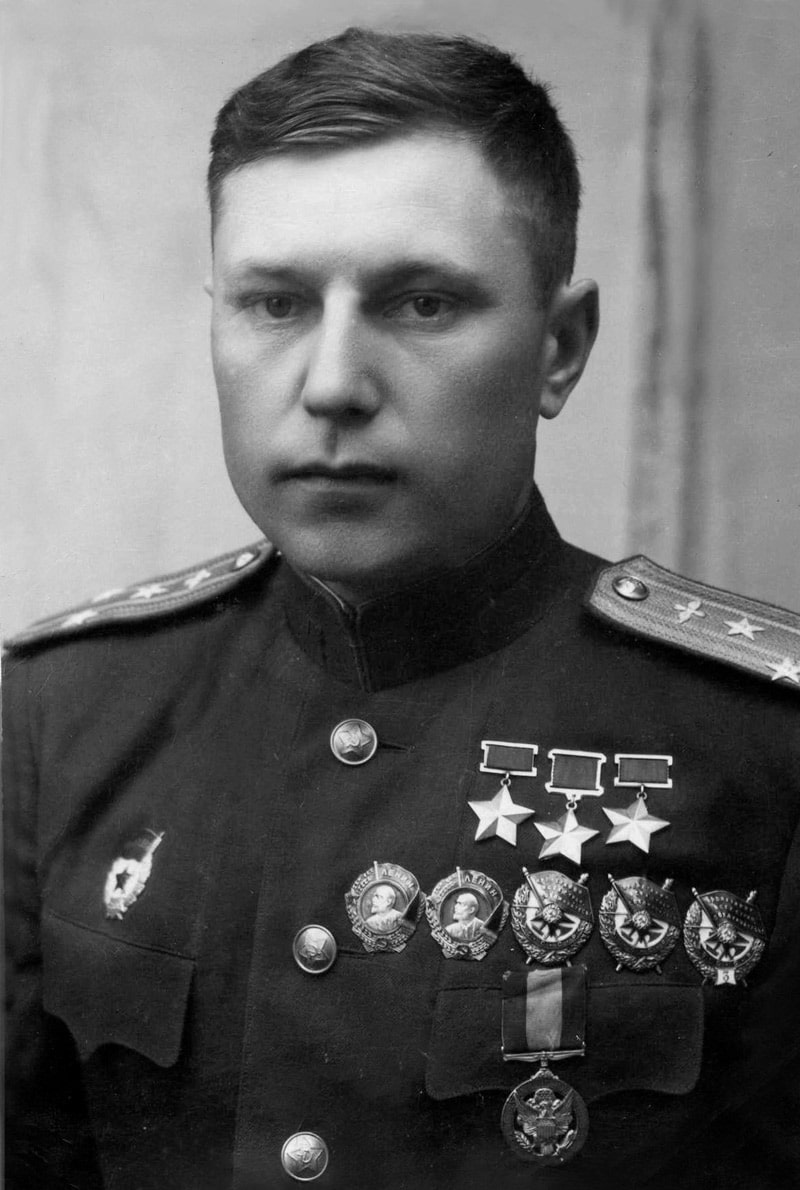
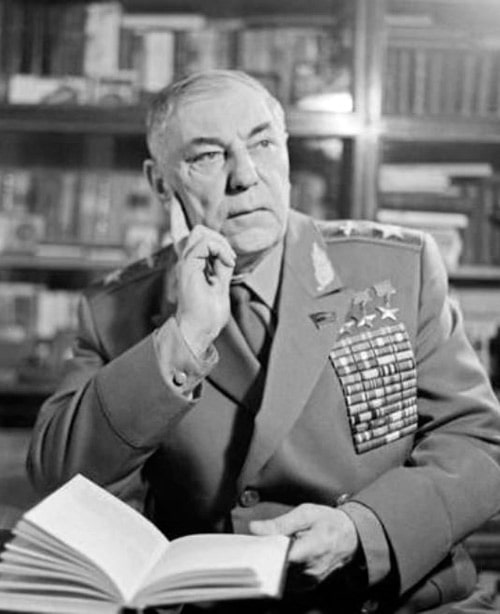
Если вам понравилась краткая биография Покрышкина – поделитесь ею в соцсетях. Если же вам нравятся биографии известных людей или интересные истории из их жизни, – подписывайтесь на сайт InteresnyeFakty.org.
Понравился пост? Нажми любую кнопку:


